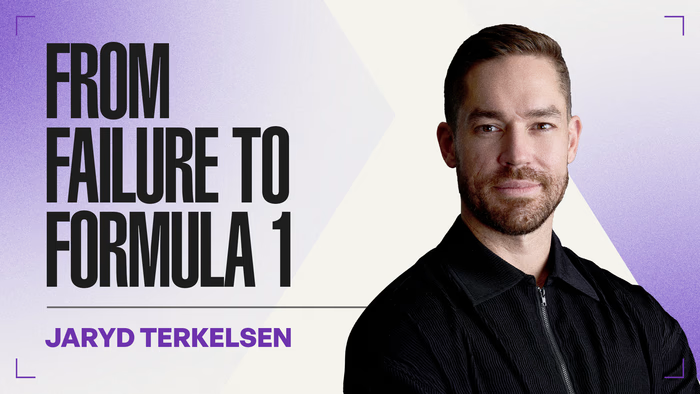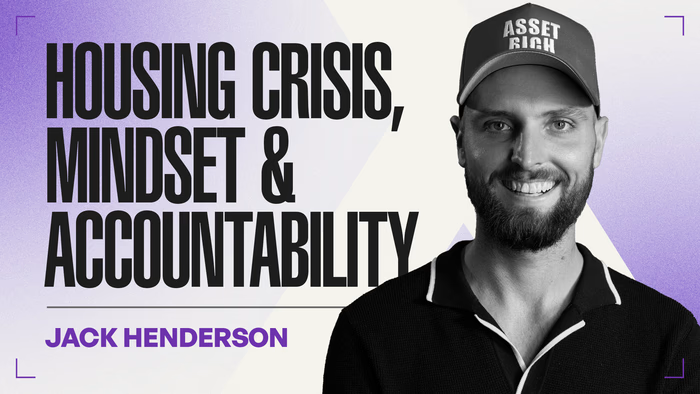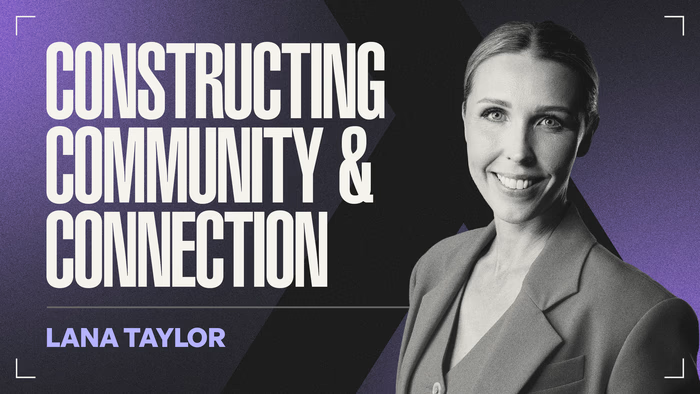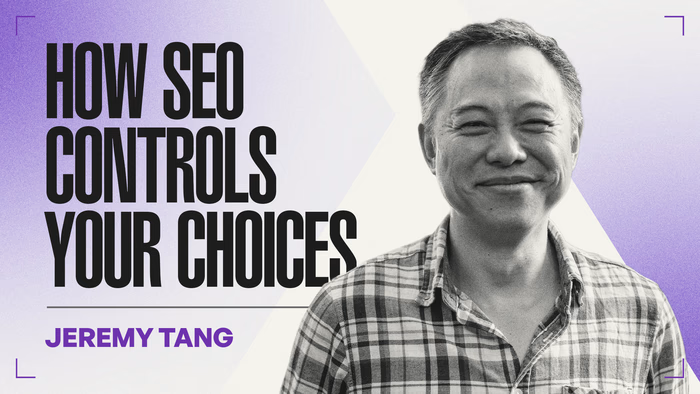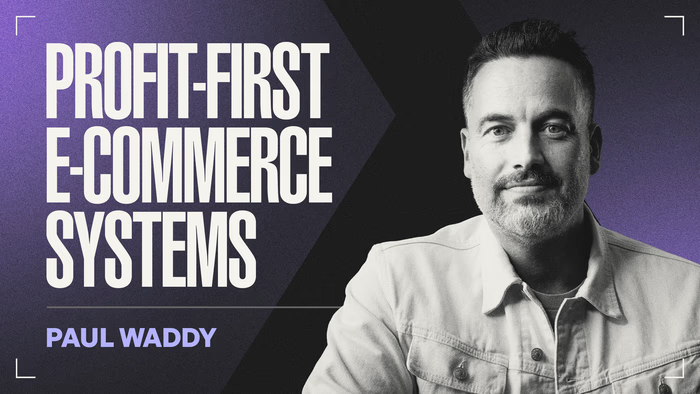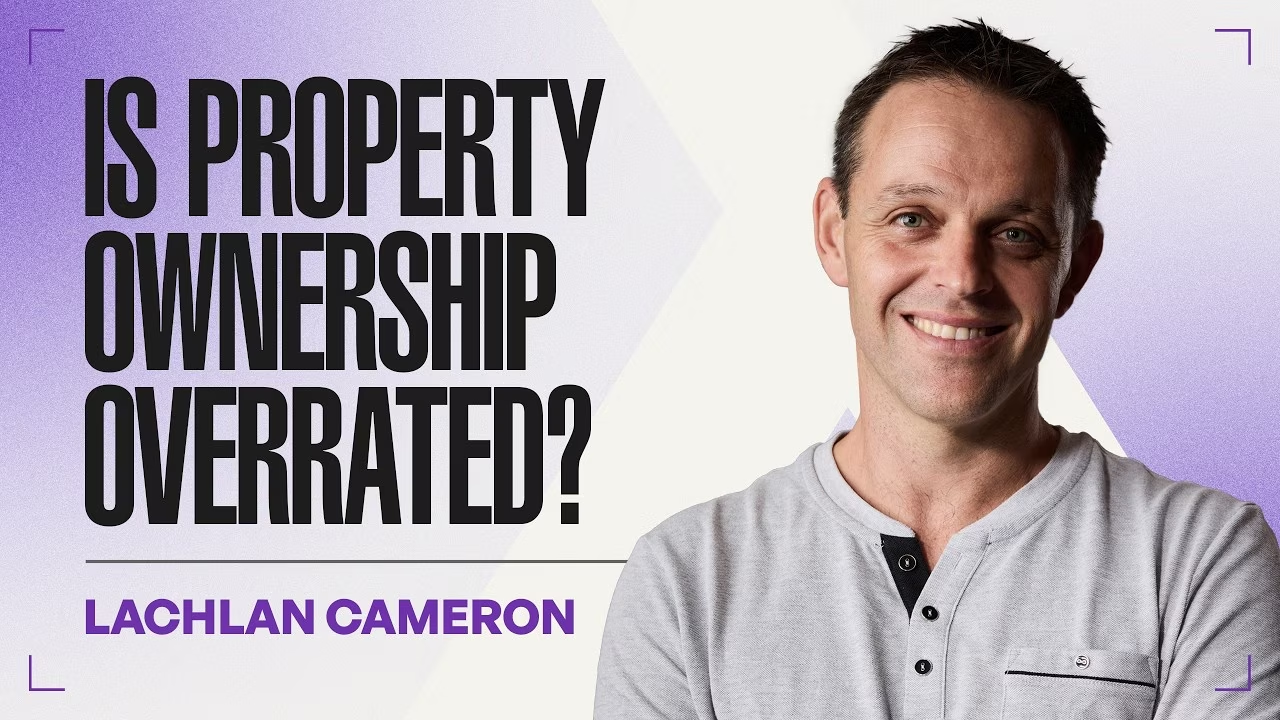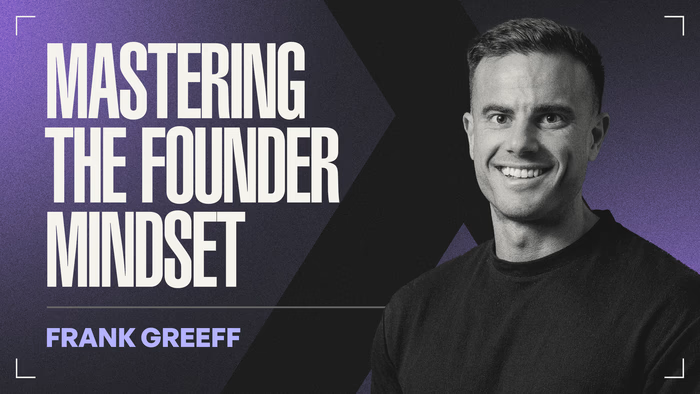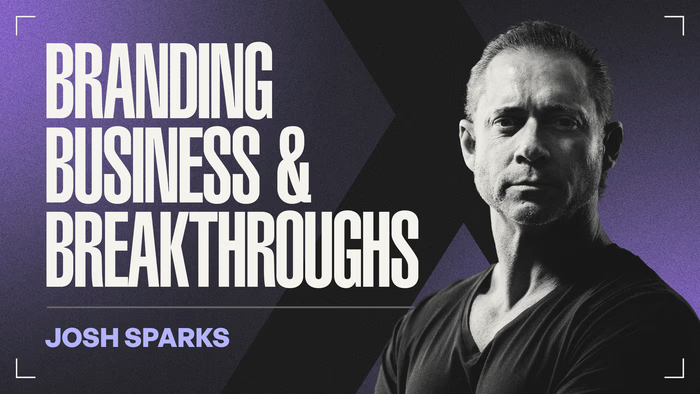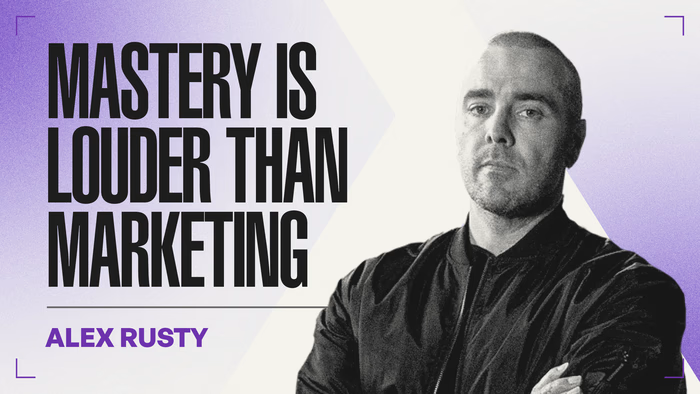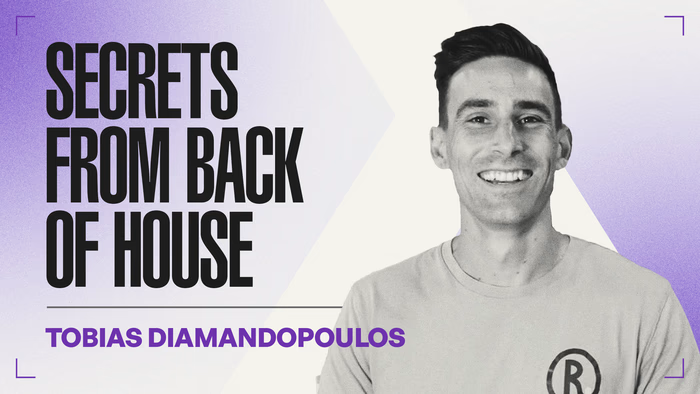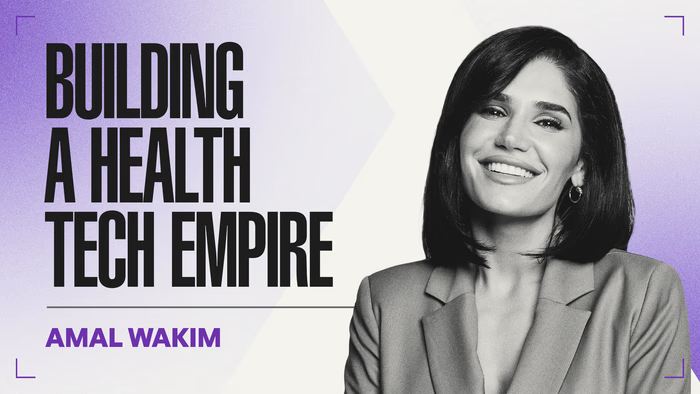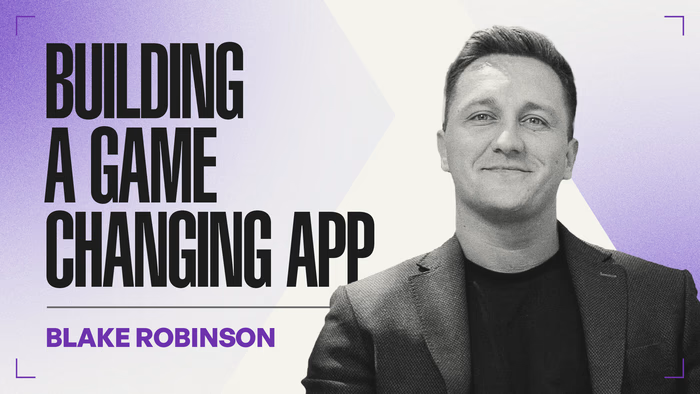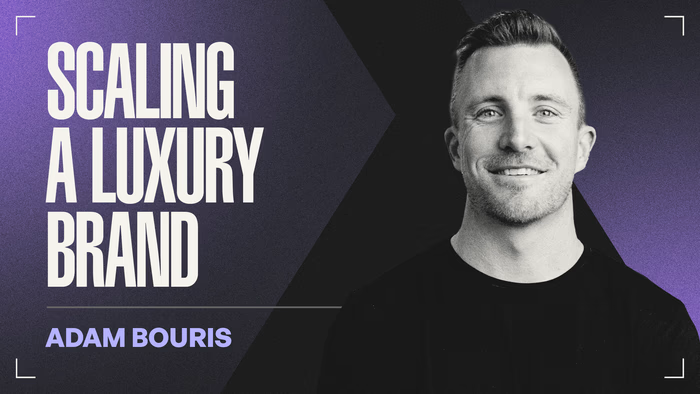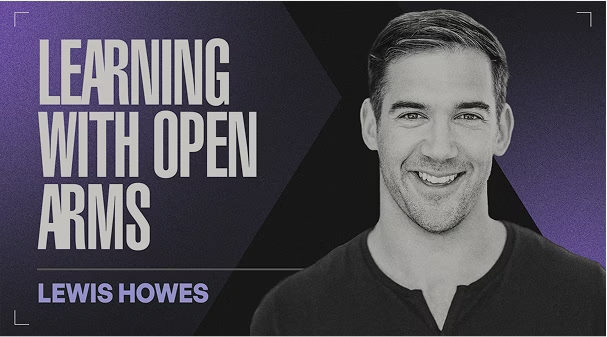


TLDR
Summary
Jay Wright, founder of eCommerce Equation, is a prominent authority in eCommerce performance marketing. He is recognized for his straightforward and direct approach, which focuses on empowering brands to succeed within the constantly shifting digital commerce environment. This episode is dedicated to providing practical and actionable insights for eCommerce businesses. Key areas of discussion include developing performance-driven creative content, utilizing Meta's AI advertising tools, and deeply understanding customer avatars. Wright's goal is to offer concrete advice for building resilient brands that effectively resonate within the modern, creator-led digital landscape.
Highlights
- Core Expertise: Jay Wright is a leading voice in eCommerce performance marketing.
- Key Focus: He is known for his direct approach and his mission to empower brands to thrive in the evolving digital landscape.
- Actionable Insights: The episode offers practical, actionable advice for eCommerce businesses.
- Covered Topics: Key areas of discussion include:
- Developing performance-driven creative.
- Utilizing Meta's AI ad tools.
- Understanding the importance of customer avatars.
- Brand Building: Wright provides practical advice for building brands that resonate in a creator-led environment.
Transcript
00:00:00 - 00:01:01
So a lot of people are in a prison of their own followers. Jay Wright is a global thought leader in e-commerce, Shopify, and meta ads. He is the founder of E-commerce Equation, Australia's largest and most active community of e-commerce entrepreneurs. You know what's weird? It's like you get all this praise and all this recognition. Really, all the hard work and when I was like building the [ __ ] in the trenches, no one cared. He's transformed thousands of brands from startups to household names such as
00:00:30 - 00:01:53
LSKD, Afterpay, and Hype. Jay is a driving force behind shaping the future of the digital retail scene. Well, you know, my first business was the agency, and I was young and stubborn and literally just worked 16our days, 7 days a week. And I just literally invented the wheel myself. And so it was a massive massive change to not just the ads algorithm but the hardware that runs the algorithm. Are we living in a renaissance right now of creativity or is it actually the end of creativity? [Music] I would like to welcome back Jay Wright
00:01:17 - 00:02:07
to the agency podcast. Welcome back man. Thank you man. Pumped to be here. you are the king of our podcast at this point in time. If there were a throne, I would give it to you. Um, and um, you know, the first episode we did together is our highest performing episode. It went absolutely viral. Um, people come up to me all the time and talk about your episode. So, I don't know what you did, man, but you crushed. So good. You know what's weird? It's like you get all this praise and all this recognition
00:01:42 - 00:02:27
and really all the hard work and when I was like building this [ __ ] in the trenches, no one cared. And then you kind of get to the other side and you got like a big team and they're doing a lot of stuff. Yeah. And then you just like get all the praise and kind of take credit for all this stuff that's like built beyond you and it just all points to you. It's almost like the recognition should have been 3 years ago when I was just grinding building this thing. Yeah. I'll take it. But it's like so do you
00:02:05 - 00:02:50
ever find that where you're like I find it weird. It's like it's it's like Yeah. I don't know. I find it weird where I'm like there's a disproportionate amount of praise and recognition now and I'm probably doing less than I was 2 three years ago and less to deserve it. I'm not like I'm not going to because I' got a big team now and they're all doing stuff and kind of the figurehead that gets to claim it all. I'll take it but should be praising like the people in
00:02:27 - 00:03:23
the trenches more but they don't know what's going to pay off yet. So you get disproportionately recognized for success than effort that leads to the success if that makes sense. Do you feel uncomfortable when that happens? No cuz I you know like I got nothing back then you know so it's u I'll take it like bring it on man got more for me I'll write it down. Write it down on a piece of paper. Send it to me. I I take it too cuz I'm like, man, for so long I was invisible and Cam and I
00:02:56 - 00:03:48
had an experience where we went to Germany recently and I was dressed like this and it was like a VIP party the night before I did my keynote and everyone in the room ignored us like wanted nothing to do with me. I guess I was like this weird guy with a mullet in the corner. And uh you know it was fun cuz I like those moments where like no one knows you know what's about to happen and um you know everyone looked cool with their turtlenecks and their glasses and everyone sophisticated and then I go on stage the next day as the
00:03:21 - 00:04:06
opener for the event. Um and then like that whole day just couldn't get away from people like everyone was like everyone's like we want to talk to you and it's like there's like a rapid fire version of it. Yes. You go from like irrelevant to relevant. Yeah. That's the weirdest thing. It's like a break neck like all of a sudden we want to talk to you. Um, but you're right, like the years of the grinding, everyone doubting you, the success wasn't really there, and then all of a sudden the praise
00:03:44 - 00:04:34
comes, people rever you, people get on calls and they're trembling in your presence. You're like, "Yeah, everyone calm down." Like, I know it is weird. Yeah. It's like Tony Robbins says, like you once you're outstanding, you don't need to be, you know, stand out by a lot. But like, you know, the difference between uh winning Olympic gold and coming fourth is like.5 of a millisecond, right? But the person who gets gold gets all the recognition, remembered forever. No one even knows
00:04:09 - 00:04:57
the name of the person that got second, let alone fourth. I mean, it's not that different, you know, like in terms of effort. You just literally just need to get your head in front a little bit and like 90% of the rewards go to the person who's 2% in front. It's weird how it works like that. Yeah. It's interesting, man. Just those those increments and I think people obsess over the the ones that make it. They do. Yeah. Yeah. Do you think it's human nature that people have like you know how um I don't know
00:04:33 - 00:05:25
if you've read Donna Miller's how to build a story brand but he talks about these heroes journey and do you think there's there's something innate in our structure that's like okay but that person won everyone else is irrelevant I think it's a lot of hedonistic adaptation like I think a lot of people think things will be different um and so you know people that have the perception of making it you know a lot of people want that but I think what a lot of people miss is like instead of idolizing
00:04:59 - 00:05:42
the $100 million brand or the, you know, the billion dollar brand founder. If you're at a million, you should really be idolizing the person that's at five or 10 because the person at 100 million doesn't really remember what they did to go from one to five, right? And they probably did it three or four years ago where the path's a lot different. Yeah. So, I think, you know, near-term references are probably better than massive references. You know what I mean? Someone who's a couple steps
00:05:21 - 00:06:22
ahead, right, can be more helpful potentially because they're kind of in the thick of it. It's clear, correct? It's close to them. Yeah. Yeah. Totally. Like there's a there's a business that is in a similar space to me called Vistage. Yeah. And um you know business consulting, they have like 55,000 members. They're two billion valuation. And so holy crap. I you know met with the co COO of that that mob in in um the US last time I was there and I learned a lot from them. But, you know,
00:05:50 - 00:06:45
it's so different. Like, it's, you know, they're acquiring 15,000 member businesses and the Nordics and stuff like this. And that's what his horizon is for going from 55 to 100,000 members. But, you know, I get a lot more value talking to um businesses that are 100 million turnover and seeing what they're doing like literally tactically to kind of get member growth because it's way more relevant. They're not, you know, they're not growing by inorganic acquisitions and doing like crazy stuff.
00:06:18 - 00:07:01
They're literally like in the trenches. And I think it's that person who's just got out of the trenches and has all the answers near terms probably way more valuable than someone who's uh on a pedestal having made it, you know what I mean? And like so far beyond. So I think that's what a lot of people a lot of people miss. And I think that's why e-commerce equations so great because you're kind of like surrounded by a bunch of people that are all at different levels. So you can learn from
00:06:40 - 00:07:28
the person who's just done that step versus someone who's like literally at the top of the mountain and can't even remember what that step was. I I would I would imagine it's they're they're actually playing the game. Yeah. So like for example, if you take like video gaming, you know, if you once upon a time played FIFA 2006 and they haven't played FIFA since 2006, that's probably the last time I played FIFA. Yeah. Yeah. Same probably. Right. Uh but then you're
00:07:04 - 00:07:59
trying to give advice to someone playing FIFA 2025 and you're like they're starting in a different era in a different market. It's a different game, right? Like and and I was saying this to someone recently like as you get into the market, what point do you get in? Like for example, I tell people when I started my agency, carousels were hot. Instagram was going nuts. Totally. Um and was this was like 2019. Oh wow. Yeah. like just on the precipice of co. So I rode the co wave when everyone was
00:07:32 - 00:08:33
getting a ton of cash injected into their bank. People were hyper optimistic about digital e-commerce businesses. The climate, the weather, the the the um the culture, the zeitgeist, the the the trends, everything was a different format to what it is now. So like entering into the brand agency building space at that point is very different to entering uh as a beginner now. 100%. So it's like I can give you advice because I'm closer to it. But if you had Paula Sher who runs Pentagram as a principal
00:08:02 - 00:08:56
in New York City and who has done so for decades and works with like City Bank and Pepsi and Toyota. Yeah. Her giving advice to someone starting now is probably going to be more far removed perhaps than mine. Totally. Cuz she hasn't been I guess in a digitally native market and had to grow a business from scratch from that perspective. So you're just saying that there's just in e-commerce or even in your case building a community there's just different entry points and who's closer
00:08:29 - 00:09:19
to the game that you're playing. I think so. Yeah, 100%. Okay. Yeah. Yeah. So say like um you know I started my agency in 2012 and we were doing SEO for e-commerce brands. Yeah. And I did like SEO for Shopo. Yeah. But that was Show Pony back then. How long ago it was. Yeah. And um and then they started doing these like Facebook ads and they were like you there was no tracking. It was just like the right column ad. This is like 2013 or something. Yeah. And they just started blowing up. So I was
00:08:55 - 00:09:55
looking at that going, "Oh my god, we should get on to this and started doing it for a couple of our other clients like Camila and stuff like that." But if you were a golden era social brand like 2012 to 2016 and you grew to like critical mass that way like and you're trying to get to critical mass and you're trying to copy what they're doing now which is probably maintaining way more like retention tactics and they've already got a big brand big big user base. Like it's you almost want someone
00:09:25 - 00:10:20
who's just gone on the up journey cuz there's a much higher probability that they did it with uh being a native social brand found a content you know understanding the interest graph on social media now than what other people did to get there if that makes sense. Like before before Facebook ads, there was a whole social like SEO kind of wave of businesses that all crushed it. And then there was the first wave of ads, the first Instagram like onbrand aesthetic kind of brands that crushed
00:09:52 - 00:10:44
influencer marketing and the real aesthetic days of social media and now it's working completely different to all that. So if you idolize brands and founders that came up through a different era, it's just way less relevant, I think. Yeah, we we had um Josh Sparks on the podcast recently and and he'd worked with um Tom Brown, New York City. Oh, nice. Um and he was the CEO and uh and you know, he got into that brands, you know, decades ago in in New York City and obviously New York fashion, different era, different time,
00:10:18 - 00:11:11
different um industry. But like to your point there about like the entry point by which you get into the market can quite dictate your growth trajectory. Yeah. And you're saying you have to have a natural understanding of like where's the market at now and you can't really play old tactics in the same way. Yeah. Yeah. More or less. Or like if you don't don't try to replicate someone who's gotten to where they are in a market that doesn't exist anymore. Okay. Like for example SEO was like the thing for a
00:10:45 - 00:11:32
long time. Yeah. And there's still a bit of a hangover like you definitely have to have SEO. What's your take on that now? Like are these platforms still relevant? Do you still need to have SEO? Do you still need to have, you know, influencers holding up, you know, uh, photos or product? Like, yeah, I mean, I think some are more relevant than others. And I think obviously it's very situational. Like, if you're in a category that has a lot of inbound demand, um, SEO can be a part of the
00:11:08 - 00:11:58
marketing mix. Uh we start working with a couple hundred new e-commerce brands every month and in our kickoffs we always ask them how the hell did you get here like what's been working because we mostly work like what works for them you know we have a qualification criteria so a lot of brands need to be semi-established um to start working in one of our programs and so ask like you know to be in the room you're obviously in the top 10% e-commerce brands already like what's working and no one says SEO so to
00:11:33 - 00:12:24
me that's like the biggest lititness test is like you know what what is working right now seems to be, you know, ads, um, and being a social native, you know, understanding how to create content that's getting distribution on these platforms right now. So, when you say social native, what do you mean by that? What's your interpretation of social native? Well, I think there's been a massive inflection point and I think some people, you know, obviously we've had uh Tik Tok launched in 2020
00:11:58 - 00:12:52
and then reals followed very quickly. But I think what's happened um is there's a lot of change happening in the industry right now and it's been slowly creeping but I actually think we've reached a tipping point dare I say an inflection point um so uh you know to be a social native is someone who actually understands what's working on the platforms right now and I think that there was a period of time I think a lot of brands are still holding on to the idea of having a brand aesthetic to
00:12:25 - 00:13:25
having a curated feed and they're still pandering to their followers and I think that what is happening is even if you just look at reals for example reals is now 60% of all time on meta platforms 60% and that's come from nothing 3 years ago four years ago so the majority of content that people are seeing isn't from brands they follow it's from an AI interest graph that is choosing what you are most likely to be interested in and respond to and that content is not aesthetic right like it's it's kind of
00:12:55 - 00:13:46
boring when people put up their beautiful sunset picture that you know like they're just not showing from random people you don't know cuz no one cares, right? What they care about is something that like resonates with them, speaks an unspoken truth. It's authentic. It's it's it's interesting in and of itself. And that's often kind of off-brand raw real content and that's what everyone's seeing, right? So the brands that are able to mirror what's happening organically from a brand
00:13:21 - 00:14:26
perspective, I think are the ones that are getting disproportionate reach and frankly disproportionate performance in ad accounts as well. some good points you make there is around the change in the algorithm and we're definitely at an inflection point. I would agree. Yeah. You know, last night I was watching um Mark Zuckerberg and Mr. Beast and um um on a podcast about uh you know um how the social media structure has very much changed from what people's perception or assumption of it is. Yeah. Um, you know,
00:13:52 - 00:14:59
and Mark Zuckerberg was talking about um how essentially the original Facebook was all about friends and being in connection with your friends and those in your real world around you. The social graph, the social graph, right? And then that turned into the feed. Y and then the feed was all built upon who do I subscribe to, who do I follow, and you would be basically the chief commander of what you would see on your feed. Yeah. in. You've opted in to see content from this friend, this influencer, this brand that I find
00:14:26 - 00:15:22
interesting. And now what is it? Well, it's permissionless, so you haven't opted in. So, uh, we've moved from a social graph where you opt in and you, uh, you give people permission to show you their content to now it's permissionless, so you haven't opted in. And you're basically, you know, you're delegating responsibility of what you see on your feed to an algorithm. And what that algorithm is surfacing is content that it thinks you will consume and it thinks that you will um either
00:14:54 - 00:15:53
share or save or lead to other consumption from others. So the content that's getting disproportionate reach is stuff that has uh you know strong watch time but also strong uh action. So the ideal bit of content would be something that has 100% watch time and has 100% share rate because that would be the most viral bit of content ever. And so it's optimizing for like total consumption on its platform because that's what social media is as a product is it's it's basically capturing and
00:15:23 - 00:16:15
selling attention. So these interest algorithms, the interest graph is optimizing for content that you haven't opted into, but it thinks you're going to watch and you're going to share and get other people to watch. Yeah. It's it's almost like uh in some ways, shapes, or forms, you know, as a creator, um we've noticed that, you know, the platform no longer rewards you based on your subscriber um or the opt-ins. It's all about like this piece of creative that you've put out there in
00:15:49 - 00:16:48
the ether, is it actually good, correct? Uh and it'll get its own merit on its own right independently of whoever or however many subscribers you have. So, for example, like if you have 100,000 subs and someone has 98 subs, but they create a better piece of creative than you, they have uh almost near the same level of opportunity of going viral if they make something good enough. 100%. It's fully merit based now. It's um I mean, I do think there's a little bit of carry from your followers obviously, but
00:16:19 - 00:17:12
I think that's partly just, you know, people like your brand and so they're going to watch it. um you know you got a subset of people who are more likely to give you that initial kick of watch time. But yeah, frankly you're right like it's 100% merit based. A person with 100 followers is you know has equal opportunity to go and get free reach from uh you know from these platforms as someone with 100,000. Yeah. Do do you think that this inflection point is rattling people? Like what's what's been
00:16:46 - 00:17:43
the firstirhand experience you've seen in e-commerce owners about all of these changes? Are people struggling? Are they adapting? what what's been your experience? So, a lot of people are in a prison of their own followers. So, if you've got 500,000 followers and you've been doing this beautiful curated aesthetic feed for like 5 years, it is super scary to then go and do some green screen hot take and break the aesthetic of your feed. You know what I mean? So, a lot of people are struggling with like
00:17:14 - 00:18:06
holding on to the old world, which is kind of pandering to this big follower base that they've built up um while still trying to be native and part of the new world. And so, I think that's probably the big thing I'm seeing is a lot of people not knowing um a lot of people with something to risk like a big follower base that's been conditioned to certain content. they almost have to risk that to then go and create a very different non-esthetic style of content that's sort of getting this incremental
00:17:40 - 00:18:35
reach on the platforms. So, that's probably been the number one hurdle I've seen people having to overcome is how do they actually transition? What's your advice to people in that situation that are, you know, we've built a fan base, they expect this from us, we need to continue to pander, we don't want to risk um, you know, our brand equity, we don't want to risk losing our volume of sales. What what's typically your advice to people in that situation? Look, I think that the like millennial
00:18:07 - 00:19:07
brand aesthetic is gone. Like no one gives a [ __ ] about what your feed looks like to be frank. Um I think that that, you know, so frankly I think that should just start to transition. But I know how scary it is. So, what we're seeing be very effective is just creating a brand new Tik Tok account or brand new Instagram account, calling it behind the scenes or calling it something different and just having that creative expression not be hindered by past aesthetic or your what your audience what you think
00:18:37 - 00:19:28
your audience expects. So, you can actually just create a whole new account and just start to do this style of content where no one's going to see it. You know, I never thought of that. Yeah, it's such a simple solution. And it's like test it on another account. Yeah. Just like create a behind the scenes account. Um I mean I'm a massive advocate for founder content. So you know uh most e-commerce like twothirds of e-commerce goes through the big guys. Um like in Australia it's you know JB
00:19:02 - 00:20:02
Hi-Fi Temple and Webstar the iconic. Um and you know twothirds of e-commerce goes to like the big guys. Onethird goes to the independents and that's the people that I consult. So you know a founder that's created a product that meets a need that they're passionate about. And if you think about who's best able to be a social media native in 2025, it's not like I don't know how the hell, you know, JB Highfi is going to do founder content, right? But most of the independent brands can. So I think we're
00:19:32 - 00:20:25
at a really any inflection point. There's a huge opportunity and I think, you know, making a founder uh social profile and doing the style of content from the founder, I think is a huge opportunity for a lot of people. And over time, what we're seeing is that when people do adopt and embody that and they start to see the performance and they start to see the reach that's coming from that, they're more willing to kind of sacrifice or at least incorporate that into the main channels.
00:19:59 - 00:20:57
Yo, my name is Dane Walker and I am disgustingly obsessed with branding. I had to figure out a way to do branding every single day. So, I branded myself. Then I started my agency Rivalionary and hired a team of branding mavericks hellbent on creating brands so good that they'll make your competition their pants. So here's the thing. You want your brand to go viral and Rival makes brands go viral. That's why we're offering you a free 30inut branding session to get an expert's opinion. If
00:20:38 - 00:21:33
you don't believe me, the proof is in the pudding. Here's what clients have to say about Rival. Rival is trusted by brands like Nutrition Warehouse, Light My Bricks, and Voomi. So, if you want to absolutely smite the competition and make your brand go viral, hit the link below and book in your free 30-minute branding session. I want to touch on some of the subject matter around AI, performance, optics. Um, give people a bit more of a sense of where the layer of the land is. We can come back to the founder
00:21:06 - 00:22:01
component. You know, we used to believe that ads were essentially about storytelling, visuals, uh, but now it feels like everything's quite datadriven. It's about AI, um, advantage plus and performance metrics. Are we living in a renaissance right now of creativity, or is it actually the end of creativity? I think to understand this question, I think it's really productive to just zoom out and understand what's just happened over the last 5 years because I think a lot of people do not have an
00:21:34 - 00:22:47
awareness of how fundamental the shifts have been to the ad platforms. So if you go back to co I think 2019 2020 ads were quite stable. We were living in an era where you had a lot of detailed interest targeting and a lot of performance was driven by media buying which is basically how you purchased impressions from meta. What audiences uh how you structure the campaigns and really I think media buying was the disproportionate advantage. Now what happened in 2021 is Apple came along and basically rugpulled Meta and they
00:22:10 - 00:23:27
basically said we are no longer going to pass across data from our apps um on our phones to you. So this is iOS 14 and it was kind of a disaster like 20 2021 basically what we used to do completely stopped working and it was slight carnage for a while there. Anyone who lives through iOS 14 media buying will know exactly what I'm talking about. Now, right about this time, Mark Zuckerberg uh decided to go all in on virtual reality and, you know, changed the name of Facebook to Meta and started
00:22:47 - 00:23:59
investing $10 billion a quarter into the virtual reality world. Jeez, I know. Yeah. Um, and that was this big play, right? 2021 Meta is going to go build the virtual reality world. Thankfully, they weren't super distracted from advertisers. And in August 21, they released Advantage Plus. And Advantage Plus was their response to operating in a way um with way reduced data. So, Advantage Plus came out as their answer to iOS 14. Uh, and frankly, it was a really good solution. It didn't immediately work for everyone, but a lot
00:23:31 - 00:24:35
of people saw very meaningful performance increases when Meta shifted to optimizing based on intent of that uh individual user based instead of optimizing for their interests. Okay, just explain Advantage Plus real quick. So, Advantage Plus shopping campaigns essentially took away your ability to select audiences and instead of saying, you know, if you want to sell shoes, you would previously go and target people that were interested in shoes or interested in Nike and you would be very selective at who you would choose to
00:24:03 - 00:25:01
show your ad to. What Advantage Plus did is it said, "We're going to choose for you. So you just give us the content and we will go and find the audience that we think um is interested in this ad. And so it went from interest targeting to intent. And they started uh gathering data from their platforms about what people were interested in and what what they were in market for. And so it was a pretty fundamental shift to how they were targeting. Um and it worked right. I think straight out of the gate massive
00:24:32 - 00:25:35
improvements. Now, what happened in 2022 was we had chat GPT. We had big chat GPT moment. Um, and the a news article came out that said there was 60 people in the metaverse. 6 total, right? So, they've been investing $10 billion. It's like Snoop Dog. Yeah. Let's do it. Literally, no one was in the metaverse. So, I think you you always got to back Zuck, right? Because what he did was he did a massive about face and they said they didn't shut down the metaverse, but they basically said we were wrong. AI was the
00:25:03 - 00:26:06
call and they they went all in on AI. Now, here's the crazy thing. I think through good luck, better than good management, all these graphics chips that they had been buying for the metaverse were the exact same chips that were powering AI. No. Yeah. These Nvidia H100 chips, right, they they're like graphics cards. They used they So, a CPU chip does one thing at a time, like an Intel CPU chip does a computation. So you have an audience of people interested in shoes. It does a big calculation and figures out one answer
00:25:36 - 00:26:33
at a time and it basically says this is the person I'm going to show the ad to. And so CPUs are good at one activity at a time. Graphics cards have to display thousands of pixels. So they're good at doing thousands of simultaneous tasks. And that's exactly what AI is. So GPUs are what's powering AI. And Meta had a bloody stockpile of these things. So Meta ended up with like 450,000 of these chips, more than Google, more than Amazon, more than Microsoft, right? Because they were like investing into
00:26:04 - 00:27:03
the metaverse. And what they did was a huge pivot, huge pivot. And they redirected all of this AI superpower into the reals interest graph and recommendation engine for content, which saw reals be their fastest growing product ever, 60% of the time on platform. And they also poured it into the ad platform and particularly advantage plus shopping campaigns. And now this week they've just released Andromeda which is their next iteration of this. But like late 23 early 24 they ripped out all the CPU chips for the ad
00:26:34 - 00:27:49
platform and they basically replace them with AI and these these Nvidia chips right and so there was a massive massive change to not just the ads algorithm but the hardware that runs the algorithm. So what this means essentially is previously we used to live in a world where we would choose an interest we would upload some ads and Meta would choose the best person from that that interest to show the ad to it was an interest first world. Now what's happening with this new AI superpower is you give Meta Creative. It looks at the
00:27:12 - 00:28:13
creative. It looks at the text, the messaging, the visuals. It looks at who's, you know, who the avatar is of that creative and it finds the most appropriate person to show that ad to. So the creative is first and that's a absolutely fundamental to the core shift in how these algorithms are working. Wait. to just give this some some some magnitude because when you think about uploading a piece of content, let's just say it's a 30 secondond reel of me getting out of a car, looking
00:27:42 - 00:28:45
around at scenery and saying something. Yeah. These chips are essentially scanning that piece of content, the subject matter, the car I'm in, the where I am, what's happening, how I look, what I'm dressed in, everything you're talking about down to the micro detail. Correct. They're auditing and analyzing all creative. Creative is the new targeting. So, so, so, so you're saying essentially it it's all about creative now. Performance creative. I think that directionally where it's heading is that
00:28:14 - 00:29:19
we are no longer media buying, we're no longer button pushing. We're really providing input to the algorithm which is creative and understanding creative strategy. And I think fundamentally that is where things are being won and lost. So previously it was one and lost on your ability to media buy. I think now it's going to be one and lost on your ability to create um the type of creative that is performative and enough diversity of creative to kind of reach incremental audiences and and you're saying essentially this
00:28:46 - 00:29:46
is somewhat of a renaissance of creative. It's no longer about spreadsheets, crunching numbers, looking at data maybe, but what's your take on that? Yeah, I think a lot of that stuff is now being done by AI, right? I think a lot of the, you know, you know, we used to do like $3 adets for all these different audiences and we used to try to figure out the the, you know, little micro hacks in targeting and optimization and do we want to do, you know, news feed or do we want to do stories? And we used to try and optimize
00:29:16 - 00:30:17
all this different stuff. Optimize placements, optimize audiences, optimize between mobile and desktop. and we'd test all this stuff ourselves going back five or six years ago was micro testing and there's no way any human can be better at any of that stuff. So I think directly where it's heading is all of the actual media buying which includes you know targeting even bid strategies placements it's it's of right now that is way more effective being done by Meta and what we can do to affect change is the inputs
00:29:46 - 00:30:36
that go into that algorithm which is creative. Now, when you look at creative, if we're just going to give this a label for the sake of it, are you are you labeling this performance creative? Performance creative. That's Yeah. I mean, um that we in February for our members, we ran uh workshops called the performance creative workshop. So, okay. So, if we take that terminology, like what does that really mean? Like for for those that are familiar with creative or understand it, fantastic.
00:30:11 - 00:30:59
But for those that are like like they have a hunch or an instinct of what they think it really might mean, like what what do you really mean by performance creative? Well, I think performance creative is an entire category of what goes into the account. And I think that it's a new discipline just like media buying is a discipline. I think uh being a brand that can create performance creative for your account. It's basically the other half of of running an account. So I think a lot of things
00:30:35 - 00:31:40
fall under that umbrella. uh there's obviously the the tactical process of creating the content but I think at a strategy level I think what we're seeing u performance creative mean is really having an understanding of the the depth and the breadth of creative you need to create so I think a lot of brands feel quite comfortable in different areas of creative like a lot of people are very good at education a lot of people are very good at product demo a lot of people might be very good at um at, you know, their brand story,
00:31:08 - 00:31:56
but there might be areas where they're very weak. So, for instance, connecting with your customers fears and desires. You know, very most people have no idea how to do that, right? But a lot of that content is what is really resonating, getting cut through because, you know, that's kind of what's happening organically on social, right? Um, so performance creative is, I think, understanding your avatars. It's understanding the conversations you need to be having with those avatars, which
00:31:32 - 00:32:25
is very well-rounded. And it's understanding how to execute on those conversations in ways that feel native to the platform. So, understanding all the different formats and uh kind of what's resonating with your audience at the tactical creation level. Now, you said that you ran a workshop for this. Yeah. Can you give us an example of an avatar uh and the strategy and and what a brand's potentially done about this? Yeah. So, avatars is one piece. So, maybe we just double click on that.
00:31:58 - 00:33:03
Yeah. So, uh, I think a lot of people make content for a fraction of the avatars they should be making content for. Um, we we have a a member of e-commerce equation called My Sensory Space. They sell sensory toys. And so, you know, the big portion of their market is um, you know, children with like ADHD and and that's a lot of the content that they made. So in this workshop we did a lot of avatar work and they identified new avatars and between we did this workshop in Brisbane and then Sydney one week
00:32:31 - 00:33:28
apart and between the Brisbane and they were in the Brisbane event and I spoke to them right before the Sydney event and uh they sort of messaged me and said we identified the grandmas by for their grandchildren and that wasn't that wasn't an avatar we'd ever gone after. So, uh, this founder got her her mom and just started shooting content with her mom about these toys, and it was one of the best performing ads in their entire account. Now, what that founder didn't have to do is they didn't have to go and
00:32:59 - 00:33:55
target grandmothers. They didn't have to go and create a new audience that was grandmar related. They just put the content up that had a grandmother in it with, you know, talking about buying, you know, something to help your grandchildren. and the algorithm knew to serve that to that demographic. Okay? So, you don't have to prompt or input, hey algorithm, I'm intending that this piece of content talks to this. You don't have to explain it. You don't have to justify it. You build a creative and
00:33:27 - 00:34:22
the AI is intelligent enough to understand what's happening, who it's for, and how to roll it into the market. 100%. So, you're saying that the avatar being the client archetype, you know, who are they, how old are they, where do they live, their interests, their desires, their uh their challenges. The AI knows this and it knows this from how the creative is constructed, how it's engineered, what's said, who's in the imagery. The AI is analyzing all of this, and then figuring out for you that
00:33:55 - 00:34:53
we're going to go put this in front of grandmothers and mothers and people that will relate to this format of content. 100%. That's terrifying. Yeah. Awesome. Yeah, it's terrifying. I think if you understand how to play into this, it's a tremendous opportunity. So, another example from my sensory space is uh they realized there was a sub segment of people that were buying these toys for their children to fall asleep. And so, they started creating ads just specifically around sleep. And again,
00:34:24 - 00:35:24
just like absolutely knocked it out of the park. Like just those two avatar changes like added a rorowass point to their account. And uh you know you could twiddle around with all your settings and you know audiences all you want. I don't think that you're getting that magnitude of change in accounts anymore from the settings in the ad account compared to what you're getting with going deep on you know your creative strategy. Um so that's like that's an example of sort of the avatar work um
00:34:54 - 00:36:05
you know and and how that actually plays out. Now if you think about being um a marketer or an advertiser or someone who runs an agency or provides services whether it be a freelancer with an agency or outfit you know do you think about like this uh Andromeda um and these performance AI um you know algorithms you know does this eliminate gut instinct or does this enhance it? Andromeda is super interesting. So I think Andromeda is the you know next progression of algorithm that's being layered over these you know these uh
00:35:29 - 00:36:44
Nvidia GPU chips right and I think if you follow it to its logical conclusion I if you just extend out what's the the directionally the trend that's happening where this ends is that every impression from every social media user is an ad that is 100% customized to them for the most likely best action that they could make at that time and that would be from infinite amounts of creative options. And so what I think Andromeda is doing is it's getting ahead of the wave of generative AI creative
00:36:07 - 00:37:16
that's about to hit because one of the rate limiters in an ad account is the amount and and you know of quality content that you can produce for the account. Now that barrier is about to get knocked down with generative AI, right? I just saw what chat GPT image generation did. Insane. So there's about to be infinite creative. And Andromeda is Meta's way of taking mass creative and very quickly understanding at a very personalized level for each user which ad is best for that user. So that's
00:36:41 - 00:37:32
directionally where it's going is 100% customized personalized ads for every single impression for every single user. We're obviously not there yet, but I think in 3 to 5 years, that's directionally where it's going. So, this is the next step. And what it's basically saying is that previously, I wouldn't say you were penalized for having too much creative in a in an advantage plus shopping campaign, but there was a massive like truncation of spend. Like the top two or three ads would get 90%
00:37:07 - 00:38:07
of the spend. And so, you would create all this creative and it just wouldn't get spend. And it just felt very superfluous. So once you started putting in 25 30 ads um you know this it just seemed wasteful. So what Andromeda's done is said just give us all the ads give us everything you possibly can and it's essentially saying to the market we'll be able to sort through this and have more indiv individualized ad recommendations for more users the more creative you give us. So it's a big shift from I wouldn't
00:37:37 - 00:38:25
say it's a shift from quality to quantity. It's basically just saying you're not going to be rate limited by the amount of ads you can get in anymore. And I think it's a response to what's coming down the road, which is generative AI ads. Yeah, we're seeing um some of the topics coming up at the moment. There's a lot of debate around this as well. Um and and I'm finding that, you know, there's terminologies that are being created around what's being called AI bloat, which is, you
00:38:01 - 00:38:58
know, the platforms are getting more and more uh of a higher percent increase in, you know, what we see is AI generated versus, you know, what was recently just all human created. Yeah. you know, you're seeing that around the corner as people get access to these tools to have unlimited creative capabilities through these generative AI algorithmic platforms is that it's no longer about going out and pointing a camera at something or partnering with an influencer. You can you can then generate an influencer and you can uh
00:38:30 - 00:39:23
prompt an ad that you want to visually portray and all the rest of it. It's only getting better and stronger. with with this coming into the platform, what do you predict is going to happen when this level of creative is at people's fingertips and they're mass- prodducing creative material that uh far exceeds the performative power of what people can create organically. Yeah. Yeah. Well, I think that's exactly what Andromeda is trying to address, which is how do you take 10 million ad
00:38:55 - 00:40:10
options for this impression and uh and correctly identify the one that's going to lead to the desired action of this user. And I think essentially what Met has done is they've 10,000x their computational power in this regard. and um and there's like quite sophisticated platforms like there's there's u meta lattice they've got new sequencing so Andromeda is just like one part of the AI stack for meta so to give you an example um they've just launched uh new sequencing so I don't know if
00:39:33 - 00:40:18
you've ever experienced this but um so I went skiing in Switzerland at Christmas right and I was looking at ski lodges and so then I booked a ski lodge but then I kept seeing ads for ski lodges Now, what this new sequencing is going to do is it's going to say, "All right, you've just bought ski lodge. Let's show him ads for skis or ski jackets." And then once I've done that, it's going to say, "Well, let's, you know, show ads for transportation in Switzerland." So,
00:39:56 - 00:40:57
there's a whole more predictive way, way more informed and way more forecasted than uh what feels like a bit of a caveman approach with like, oh, you you're looking at lodges, here's more. Correct. So, Andromeda fits in the whole Meta AI stack. So there's metal lattice, there's uh new sequencing and um and there's a whole raft of these AI measures. Andromeda is really about uh predictive a predictive engine about the best next ad to allow for more volume. But there's a bunch of this stuff kind
00:40:27 - 00:41:24
of happening in the background that I think think's going to deal with um you know with the inevitable generative AI massive creative. I definitely don't think we're there yet. I think like 90% of the AI creative maybe 99% is not better than what is being created by humans. Uh but there will be a tipping point like you can do the you know you can do AI influences already. Um and they seem kind of real but they're definitely not as dynamic as someone actually talking about a product. Um
00:40:55 - 00:42:01
there's a bit of uncanny valley. Yeah, there is a bit. So, we're not quite there yet, but I think that's, you know, essentially, and I think there's a lesson in that, Dane, I think I think um with all of this AI stuff, I think my belief is that the big usable tools are going to come from the platforms that we're all already using. And I think a lot of people are trying to be pioneers. And I think there's some merit to that. But I think like Meta and what they're doing, they'll probably be
00:41:27 - 00:42:13
the leader in generative AI creative. Um, and some of the early stuff I've seen coming out of Meta is very exciting. Uh, I I think there's a, you know, there's a frontier. What's that saying? That the pioneers get killed by the Indians and the settlers get all the gold. But I think, you know, if you're a pioneer in AI, I think you spend a lot of time and effort trying to be like literally at the front line. But very shortly following like these main platforms are kind of like building out
00:41:51 - 00:42:52
the functionality. So to give you an example, right, there was a platform called um ADA ADA and two years ago they came out with um AI chat support for for brands. So you could, you know, basically have an AI bot doing chat support and it was like $48,000. WA right? Yeah. It was like a three-month inter implementation project. And then literally 18 months later, like Gorgeous, which is a very prolific customer support platform, just came out with native functionality. And like 80% of our brands are on Gorgeous.
00:42:22 - 00:43:04
So, it's just like So, I think you can be a pioneer with a lot of this stuff, but I think the platforms are really going to be leading the charge. It reminds me when like DVD players came out and they're like eight grand. Yeah. Or plasma TVs. Remember plasma TVs? Yeah. Like $14,000 for a plasma TV. Now you can get one for 200 bucks, right? I know. I know. So, you're seeing a bit of bloat, a bit of pioneering, uh, a bit of flexing. We're definitely in a turf war about who's going to do what with AI.
00:42:43 - 00:43:39
Just a ton of noise. And I think as a founder, you have FOMO. You're like, "Oh my god, like I don't have an AI agent yet." And it's like, yep, you could go you could be two months ahead, but um it's a lot of kind of time distraction, I think. And I think a lot of this stuff is going to be prolificated. And the use the actual use cases, a lot of them, I think, will come from the big platforms that we're all already using. Um it might just be three or four months late.
00:43:10 - 00:44:05
Okay. Now, if you're a business owner right now and you're getting started in e-commerce or whatever field of, you know, uh using meta advertising to get attention to sell whatever you're selling, is this a good time to be a business owner or a terrible time? I'm so I think it's like literally the best time ever? Like imagine coming in where you can have no following and you can just learn like native social media right now and you can go toe-to-toe with in terms of like re organic reach as
00:43:38 - 00:44:25
anyone else. M like previously you would go in like 4 years ago you start Instagram like how the hell do you grow your Instagram it's just it was literally impossible before reals to grow organically you had to work really hard on building followers right and like it just ground like when it was follower based in the social graph it kind of got to a point of just massive diminishing returns and it was almost impossible to get followings and now you don't really need a following well even
00:44:02 - 00:44:51
on my Instagram for example like we built our fan base in that era when it was all about followers and I would produce a piece of content whatever it was and it would guarantee that 15% of my audience would see it. Um, and we had a really healthy account. Now it just feels like it's so hot pocket random like if you crush this piece of content goes nuts. If you don't, it doesn't. And it just I don't know. I feel like it's forcing me to be more creative, to be more intuitive, to listen to my audience
00:44:26 - 00:45:27
more, to be better uh at understanding what's what's in the press right now. I feel forced to be better. Totally. So, so do you feel like that you know it's this is this era is demanding more of creative types? Yeah, 100%. Yeah. But I think with any inflection point there's just such big opportunity. So as a brand coming in now uh you have the ability and for the first time in in a while I think you have the ability to get free organic reach and I think you have the ability to uh to do things that others
00:44:57 - 00:45:51
aren't willing to do. A lot of people still grappling with this brand identity and shifting to kind of, you know, either founderled content or more native style of content right now and you're seeing a lot of people come up very quickly through this environment by just leaning into what's what's native, what's working right now. So, I think it's an awesome time. Couple that with the fact that you can probably be a lot leaner in terms of you don't need customer support people. you don't or as
00:45:24 - 00:46:32
many at least you know a a lot over the next couple years I think you'll be able to run business a lot a lot leaner and that's super exciting I think the thing I'd be very scared of is if you think of Timu you to think of Shane they're so locked in with having the best selection at the best price so I think what I would be thinking about is what am I actually competing on and you don't really want to be competing on price or selection I think, you know, owning your brand, people want to buy from people. And I
00:45:58 - 00:46:54
think that's a huge advantage for people starting right now as well is actually standing out from the crowd by personifying the brand and actually allowing people to understand your journey and buying from an actual person, not just buying a faceless product, if that makes sense. Business owners, if you're stuck using one platform for every project, you're probably stuck in a growth bottleneck. More clients means more hires, which just adds noise and cuts into profits. To break the loop, you need flexible
00:46:26 - 00:47:33
tools that don't stretch your resources. Wix Studio is a smart addition to your business toolkit. Intuitive by design, your team can quickly master the platform and focus on the work that matters the most. Then keep up the momentum with a built-in management tool, a unified dashboard, reusable assets, and a Figma plug-in that turns static design into launch ready websites. With robust native business solutions like bookings, e-commerce, and events, you can take any project at any scale without the added cost of
00:46:59 - 00:48:01
third-party plugins. Plus, Wick Studio is a lowmaintenance platform, meaning you can redirect the client budget towards real growth initiatives. Think more value for clients, steady income streams, and stronger relationships. To get started, simply go to wix.com/studio. If you think about the data and the analytics that we're looking for behind the performance. Yeah. Um what do you think are, you know, recent stats or numbers or figures that, you know, e-commerce owners are looking for like, you know, um their
00:47:32 - 00:48:19
CPLs or their rorowaz or what have you. When you're looking at this creative that we put out there, what stats should be uh top of mind? What should we be looking for for high performing content? Yeah, there's not there's not a onetoone correlation with what works organically and what works in ads. So we've seen stuff that didn't really pop off organically be best performers in ad accounts but it was still done in that kind of you know social so it didn't work in one field but it worked in
00:47:56 - 00:48:49
another. Yeah. So it's not like a onetoone correlation but there definitely is correlation. So you know seeing what's working organically from uh basically nonfollower views is probably like a very good leading indicator that you're on the right track. Um you know level of engagement with that content as well. like if people are very engaged talking about it, you feel like you've touched on a nerve, it might be good to double down on that and just follow the theme of what people are talking about. Um, so
00:48:22 - 00:49:11
for example, I did a Q&A and I just said, "Ask me anything." And someone asked me how to find a factory for furniture in China and I just shared a response to my thoughts on that and there was a bunch of comments saying, "Why don't you just find an Australianmade factory?" So then I did a bit of content on like why it's so hard to do Australianmade and that thing popped off, right? So I think a lot of it is just getting in the market and starting to actually follow some of
00:48:47 - 00:49:50
these themes where you can find what people are asking, what they're engaging with. Um so uh yeah, so so definitely organic views is a good leading indicator. Um what's happening from an ad front is very interesting because previously I think we would approach ads as a bit of an engineer and we would build stuff and set it free and a lot of the work was done in the construction of audiences and campaigns and exclusions and how we were kind of crafting these campaigns and we would be you know kind
00:49:18 - 00:50:20
of measuring that um with the you know the usual rowass CPA. I think what's happening now is is a lot of that stuff is getting automated into a bit of a black box. Uh we're less of an engineer and we're kind of more of a coach where I think increasingly people need to be able to interpret the funnel behavior from data and intervene when necessary. So I am definitely looking at different metrics in an ad account than I would have two years ago. Can you give me an example of that? Yeah. So,
00:49:49 - 00:50:47
previously you would do a top off ofunnel campaign and maybe you would add some exclusions. Can you give an example of what that might be? Yeah. Yes. If I want to sell shoes, I might target Nike and there might be, you know, 160 million people in America interested in Nike. I might exclude anyone that's purchased from me in the past to make it top of funnel. Okay? And I would um, you know, I would look at CPA and Rorowass and I'd be pretty confident that things were top ofunnel. Now what's happened
00:50:17 - 00:51:12
with iOS 14 is it's harder to exclude and a lot of the advantage plus shopping campaigns are way more blended. So you can't you know you can't uh the mechanism with which you exclude is an existing customer cap. It's not as accurate and so if I want blue M&M's I might get a bunch of green ones as well. Yeah. You might get some of your customers sprinkled in with your top funnel audience. So it's it's harder to exclude. And I also think it's if you know the harsh exclusions are kind of
00:50:46 - 00:51:43
leading to worse performance because you're kind of constricting where this algorithm is trying to go. Um so what I'm looking at now is trying to understand the funnel behavior. So you can do things like look at the breakdown of audience and you can see what percentage of your ad spend is going to uh new customers, engaged customers or existing customers and you you can change those audiences to try and push more money into the audience that you want. So that's one thing we're looking
00:51:14 - 00:52:02
at. Uh another signal I'm looking a lot at, sorry if this is getting too nerdy. No, this is a fant Go ahead, man. Like go in the rabbit hole, man. It's all good. Yeah. So, another another thing I'm looking a lot at is the percentage of view through versus click-through conversions. So, again, if you have a high percentage of view through conversion, to me, that's a signal that you're doing more lowerfunnel activity. So, you might want to adjust some of the settings in those advantage plus
00:51:38 - 00:52:42
campaigns. And then we're looking a lot at frequency. So, what we're seeing with frequency, particularly at the creative level, is that when you nail a really good bit of creative, it gets a lot more reach. So you will reach more people less often. When you have a bit of creative that's a bit ho harm, it often chooses to show it to the people that are more forgiving and that's often your lower funnel audience. So it gets shown to fewer people more times. So frequency is increasingly a metric that I'm
00:52:10 - 00:53:00
keeping a very close eye on uh particularly at the creative level but just through all campaigns. So, we're really like doing a little bit more investigation to try to understand funnel behavior where a couple years ago we just like set something live and you know you could pretty much have a high level of confidence it was going to behave like you set it up. But now you're sort of setting it up and it could go a bunch of different ways. It could lean very very bottom funnel or it could lean more upper funnel depending
00:52:34 - 00:53:24
on, you know, how it's um how it's optimizing the creative you've given it, right? And I think being able to understand that and intervene is now our job versus, you know, being an engineer and just creating something from scratch. Yeah. We've even noticed with our own ad creative for the agency that when we're um you know, once upon time years ago, we could have just set up a campaign and it would perform for six months. Pretty solid. Now it just feels like every 10 days, you know, it
00:53:00 - 00:53:53
skyrockets. It goes crazy for a couple days and then it kind of tapers out and hits a hits a set of bad performance criteria and then we have to kind of It feels like right now we're recreating reinventing creative every 10 days or so. You know what's happening there though, right? I would love you to explain that to me. So like logically it doesn't make sense that an ad would burn out in 10 days. Yeah. So to me that's a really clear signal that even though you might have a campaign labeled top
00:53:27 - 00:54:27
ofunnel or you might think it's top ofunnel in that audience it includes a lot of your warm audience and most of us are saying to Meta find me the lowest cost conversion and so within a massive audience the people that are the lowest cost to convert would be the warmest. So, if you've got too much of your warm audience contained in a campaign, it'll disproportionately serve them the ad. And so, they get burnt out much quicker because it's a finite audience. So, to me, that's a really clear signal that
00:53:56 - 00:54:52
you've got a structural issue. And I'd be looking at, you know, I basically be looking at the frequency to try and understand, do I need to change the structure a little bit? Do I need to change who I've classified as existing um to try to push more money up a funnel? Uh, and obviously, you know, there's manual campaign still as well that you can still do harsher exclusions, but to me that's a signal that you you're not actually doing top of funnel. You are um you you are the
00:54:25 - 00:55:12
algorithm is probably pushing a lot of money to the lower audiences if that makes sense. So the lower audiences just to find out and define bottom of funnel. You're saying more of our warm uh localized audience are the ones that are seeing these ads and they're getting sick of them or correct. Yeah. Yeah. So you might you might you know I don't know what type of campaigns you're running but say targeting an old school manual detailed interest campaign and you're going after audience owners right
00:54:48 - 00:55:50
uh uh agency owners or um you know people interested in click let's just say fashion like we're targeting uh uh e-commerce fashion uh owners right so that audience might be 10 million now unless you tell Meta otherwise within that 10 million it may contain 500,000 people that have been on your Instagram profile in the last 180 days. It might contain 30,000 people that have visited your website in the last 180 days. It might contain people that engaged with the post in the last 365 days. And there
00:55:20 - 00:56:10
might be a million in that 10 million that like know, like, trust, love you, disproportionately engage with your content. So, when you say to Meta, "Go find me people to buy my stuff in this audience of 10 million." You think you're doing top of funnel, but Meta goes, I know who's the most likely to convert. It's the person that was on Dne's website yesterday. And so it'll push more of the money down there. And so what you see is like reaches compressed, frequency is high, and the
00:55:45 - 00:56:28
same people are seeing the ad over and over again. And that's why the ad experiences burn out. It doesn't make sense if you've got a big audience of 10 million that an ad would burn out super quick like that. And and the fact that it didn't used to be like that and that's what's happening now seems like there's been a change to the structure. Man, I appreciate that. Thank you. We should bust out your ad account. Yeah, let's do it. Yeah, let's do it after this for sure. I would love your take on
00:56:06 - 00:56:53
it. Now, when like even just hearing that just now, you're like, "Okay, cool. Couple signals here, a couple things to be considered um within the ad campaign, you're just without even seeing it, you have um a hunch on what it could be." So, for you, what are some of these benchmarks that people should be going for, whether it be top of funnel, bottom of funnel, like everything in between? Do you have some things that you're like, I need to see these kinds of numbers to know that you're doing well?
00:56:30 - 00:57:48
Yeah. So there is some very common scenarios that we see over and over and over again and uh there's some very common symptoms. So uh you know like you just described one very common symptom. I think there's there's a big idea about incrementality and one of the challenges with meta is that with all ad platforms to be frank is that every ad platform overattributes. So, you know, if you added up all the conversions from Google, Meta, Tik Tok, Pinterest, that'd all add up to like three times the
00:57:09 - 00:58:08
actual amount of orders you got that month. And the reason for that is that they are very good at attributing sales into the platform. They are incentivized to make their performance look good. And this isn't deceitful. They're clear about it, but most people just are quite ignorant to it. So say for example the default setting for meta is like a lot of people look at CPA cost per purchase and a lot of people look at return on ad spend so the purchase conversion value divided by how much you spent right and
00:57:38 - 00:58:31
so what what no one really understands what goes into those metrics. What is a purchase? If you're looking at cost per purchase and return on ad spend both of those things are driven by a purchase. And what people think a purchase is, people think a purchase is someone clicks your ad and buys something. Right. Right. Makes sense. Makes sense. And that's definitely true. What they don't realize is they can click an ad and buy something 7 days later and that will still be a purchase from any means.
00:58:04 - 00:59:02
So it's a 7-day click attribution, but there's also another type of purchase. So someone can see your ad for a millisecond, not even register it, and then they can go and um Google you and convert and Meta will still count that as a conversion because they saw your ad if they convert within 24 hours. It's called a view through conversion. So not a lot of people realize that attribution can make a massive difference to what your account looks like. So one of the big scenarios we see as an issue is
00:58:34 - 00:59:21
people will think they have a spectacular rorowass. We'll often get people who start um in e-commerce equation and they'll be spending a relatively small amount of money on ads like $100 a day on ads and they'll think they're doing top ofunnel and they'll think they've got a nine rowass. But when you actually start to drill down, they're not doing a lot of top of funnel because there's no exclusions and a lot of the money is actually going to the warmest part of that audience. But not
00:58:57 - 00:59:47
only that, the ads aren't actually driving people through the through the funnel. They're just putting ads in front of people that were probably going to buy anyway and attributing that conversion into the ad account with view through conversions. So when you actually start to delineate this, someone who has a nine rorowass might actually, if you look at who was actually a new customer and who actually clicked an ad, which is, you know, probably a better metric to be looking at, it can go from a nine to a one
00:59:22 - 01:00:23
rowass, right? Wow. So the the actual attribution and understanding it is huge. And I think those two things like understanding funnel behavior, understanding attribution, um, definitely things that I look at all the time in an ad account. Really at a meta level, what I'm thinking about is what is the behavior of this campaign? Is it showing to new people or is it showing to existing people? Is it getting people to click an ad or is it simply putting ads in front of people it knows are highly likely to repeat and just trying
00:59:53 - 01:00:41
to attribute that into the account. And so I'm really just trying to understand behavior and then intervene to get more of the behavior that I want, which is typically incremental sales. It's typically I'm trying to get new customers to purchase or I'm trying to get a sale that wasn't going to happen anyway. Um, so lots of what I look at in an ad account is those things. And you're saying that you're looking at the behavior, you're looking at the intentionality of the ad, you're looking
01:00:16 - 01:01:03
at like what is um, Andromeda or you know the attribution behind it, what is it driving toward? And then how do you influence that? Like can you change the behavior of like how these ads are are functioning and how much control do people have over that? Yeah, 100%. Like one thing you can change is the creative. So what we see a lot of is people think an ad's crushing it but it's like not getting a lot of incremental reach and it's getting a lot of view through conversions. So it's not
01:00:40 - 01:01:43
actually getting incremental sales. And so you can have huge impact on your reach and frequency from different types of creative. So you know we kind of have identify ads that we feel are scalable based on their incremental reach and incremental orders. So creative is huge. Um the other thing you can do is in the structure of the audiences with advantage plus you sort of set the audience um you sort of set audiences at the at the account level. So you can choose what your definition of an existing customer is. So if it's not
01:01:11 - 01:02:02
pushing far enough up a funnel you can tweak that. So by default, a lot of people put in like literally their customers. So who is an existing customer? They'll give it purchases as an audience and say that's existing customers. But there's nothing to say you couldn't add 30-day web visits to that audience. Okay. And stop it from going after that level of warmth. So the challenge is there's no silver bullet. Don't do that because what you actually need might be very different. That might
01:01:36 - 01:02:24
be way too harsh. Yes. Um so yeah, you kind of just need to read the data and respond incrementally. Okay. Uh there's no like blanket here's the best exclusions. It's very specific because some people have repeat products, some people have one-time purchases, some people have very niche products, and so what your settings should be are quite bespoke to each ad account. Um but there's definitely ways you can affect the behavior. Okay. And do you think that there's much of a difference
01:02:01 - 01:03:04
between product based businesses and service based businesses when it comes to meta? I do. I do. Um yeah. So I mean product based product based businesses typically have a much shorter conversion cycle. Uh particularly at like lower price point products often they can be like I see it I want to add right like some things are very spontaneous. Um some things are kind of like low consideration even if they're not spontaneous. I think a lot of B2B businesses have a much longer lead time. So I think in those scenarios you're
01:02:32 - 01:03:39
falling outside of you know most conversion windows and it's it's kind of more understanding the marketing mix model like which channels are fueling incremental incremental performance. So for me, we spend a lot on Instagram and content. Uh very hard to attribute that to to new customers, but we know that if we uh deweight that in our effort, it has impact on the other channels further down the funnel. Same like we noticed the second I stop making less content, the second I'm putting less effort into
01:03:05 - 01:03:45
it, it's less frequent. Uh lead generation drops. Yeah. So we we we can't directly attribute it, but like for example, our sales team when they get on a call, you know, they'll ask questions like, "Hey, how did you find us?" And usually they kind of don't know, but they're like, "I don't know, but I saw him on Instagram somewhere or something months ago. Now I'm talking to you." Yeah. Things like that. And it's like it's kind of hard to calculate it,
01:03:26 - 01:04:18
but you know, it's there. Yeah. Yeah. Yeah. I think one thing a lot of e-commerce businesses do have a good idea on like their marketing mix model because it's a much simpler business model, whereas service it's it's a lot more convoluted. It's way more con convoluted. But I also think an e-commerce is literally like it's it's like I wouldn't say it's doing business in hard mode, but it's um you need to be very efficient. You know, you're talking about kind of pretty thin margins. And I
01:03:52 - 01:04:50
think like constraints breed resourcefulness and e-commerce businesses have a lot of constraints. And so I think like e-commerce marketers I think are like the best. You know, they're they're usually right on the ball with what's working, hyper efficient. And I think in B2B there's just a lot more fat. So I think I think people are kind of less progressive in terms of marketing. So for instance, there's a lot of stuff in the e-commerce world around incrementality like actually measuring incrementality
01:04:21 - 01:05:14
through hold out tests and geo studies and lift studies. There's a lot of stuff around marketing mix modeling as in if I spend less on Google does that impact Facebook or what's the best mix of these channels? And I just don't hear and see a lot of that stuff in B2B. Whereas there's like a whole industry in e-commerce of attribution tools, marketing mix models, incrementality tests. So, and then I think that is because you kind of really need to be very dialed in. Where in B2B, I think
01:04:47 - 01:05:36
most people um at least the ones that I've kind of interacted with are doing a bunch of stuff and don't really know what's working because it's such a long lead time. Yeah. And um and yeah, I don't know. I feel like I feel like B2B is maybe not less sophisticated, but um it's a different breed, right? It is different. I think from from our e-commerce clients that we've worked with, they're very like good with their numbers. They're datacentric. They have to figure out logistics and timing for
01:05:12 - 01:05:58
importing and shipping. Uh they have to do packaging and exporting. They just they have to really run off tight margins and they usually have smaller teams. They don't have like a ton of staff or anything. Um so they're running on a thin margin and that just makes them you know super hyper sensitive to spend and what's happening where. And whereas a, you know, a service-based business, it's like, well, you could go to a networking event and meet five people and get a ton of leads and
01:05:35 - 01:06:29
convert those and then get wall market referrals, whereas none of that really helps an ecom store owner. Yeah. In the same way. Yeah. Yeah. Agree. Yeah. Okay. Now, if you think about like smaller businesses trying to navigate this stuff, let's say someone's like, "Okay, I've set up my Shopify store. I have an average product at best. Um, but I think it's good and I can improve it. you know, um I've tried advertising before. This is something we hear a lot, which is like, I've had a crack. I tried it.
01:06:02 - 01:07:03
And then usually when I go deeper, it's like, well, we spent a thousand bucks and did nothing. Like, let's say someone has a couple thousand a month budget. They need it to work quickly. They've got a small surplus of product. Um they're running a bootstrapped ecom business. Like, how can they best capitalize on creative and ad spend uh quickly to make sure that they can get themselves a small chunk of profit to keep the thing going? Yeah, I I still think that Meta is the best go to market channel. Okay. And so
01:06:33 - 01:07:31
not LinkedIn, Pinterest, other platforms. Yeah, I mean the ones that come up in the e-commerce context are Google, Tik Tok, Meta, like or doing organic. Basically, organic's great. I love organic. Uh it's just that it's less predictable and it's less scalable immediately. So it takes time to incubate. It does a fan base to get trust to to make content that people want to care about. Yeah. Yeah. And people want predictability. Like I think especially in those early days, you need
01:07:02 - 01:07:56
predictability to be able to increase the amount you're ordering and to actually get to scale. Like if you feel like you've just flooked a couple of good videos and gotten some sales that way, I think it could be really dangerous to kind of build your business on that. So um you know, in our world, we're probably going to spend $500 million on meta ads this year and we'll probably spend a hundred million on Google. Um, and then maybe like 10 to 20 million on Tik Tok ads. So that's not
01:07:28 - 01:08:28
us. That's not us dictating that. That's like 4,000 brands basically going where the money is. So when I say I think Meta is the best go to market channel. That's literally the feedback that we're getting from the market if that makes sense. So I would firstly recommend trying one thing at a time. Like the mistake that I see people make is they'll try to they'll try to do meta ads and Google ads and a little bit of Pinterest and and the challenge is one of those things might be working really
01:07:59 - 01:08:48
well, but the other things might be dragging it down. And the way the attribution works is you're never really going to know because everything's going to be claiming everything, right? So if you do one channel and you see an increase in sales, you know that channel led to the sales, okay? Um and so what that does is it gives you confidence. And I think getting out of that bootstrap stage, so much of it is about clarity and confidence. So if you are really clear that that channel led to
01:08:23 - 01:09:20
the led to the performance, uh you'll have confidence to do more of it. And that's how you kind of get to scale. So yeah, I would say meta is probably the best bet right now. Um I also hear a lot of people saying, "I've tried it. It didn't didn't work." I hear that all the time. And I and then when you investigate further, it's like, well, they barely did anything. they just they they were scared to spend uh a sum of money to figure out the system. And you hear this from ad agencies all the time.
01:08:52 - 01:09:43
Well, the first 3 to 6 months you're going to blow money. It's not going to make profit. But that's the learning cycle. That's what you have to do. yada yada. Do you believe in that or do you think that that's a false ad claim and that's something that ad agencies say to get people in the door? Yeah. I I mean ad shouldn't take that long to get dialed up. I think what's really happening is people do not have clarity over their data and they don't actually know what problem they should be
01:09:17 - 01:10:14
solving. So most people think that they have a marketing problem and they absolutely probably do cuz we could all be better at marketing, right? But what we do is we help people get really clear on their data but the the magic is that we benchmark that to a really successful set of businesses in a similar category or similar niches. So what that does is allows someone to come in and go, "All right, here's my data. Here's my key performance indicators." And I can actually see how I compare, see where
01:09:46 - 01:10:39
I'm strong, and see where I'm weak. So that gives you so much clarity because if you come in and you go, "Look, my revenue per visit, the amount of money that I extract for every visit to my website is approximately as good or better than the average, that means that I should be able to effectively drive traffic." You know, you probably do have a marketing problem. But if you're there trying to fix and grow your business through marketing and you look at your conversion environment and your revenue
01:10:11 - 01:11:00
per visit is a dollar and the average of a good set of e-commerce brands is $3, then you think, well, [ __ ] I'm I'm competing in an auction with all these guys and they're getting $3 for every click, $3 in revenue for every click. I'm getting one. So maybe it's not an ad problem. Maybe I need to go work on my conversion environment, which might be product, it might be um it might be actually what's happening on site. It might be how you're running your promotional calendar. So, there's a
01:10:37 - 01:11:27
bunch of like I think half the people out there trying to grow from fixing marketing don't have marketing problems and they are literally just bouncing around trying to get the unicorn 10x rorowass, which and they probably could scale with a 10x r rowass. Yeah. But if the market's not getting that and you're just starting like you're, you know, like theoretically they are correct. If you had better marketing performance, you would scale, but that's not the right problem to be solving. You know,
01:11:02 - 01:11:49
you're trying to get to be the top 1% advertiser where if you just got to average in other facets of your business, that would lead that would be the big unlock. What are those other facets that you find that people snooze on or aren't paying enough attention to? Uh big one is conversion, right? And when I say conversion, most people think site. they think, you know, um changing the button colors and all that kind of stuff. Okay? And there's definitely an element of that. You want to reduce
01:11:25 - 01:12:12
friction. You want to uh clearly articulate your your value proposition, the promise that you're making to the market. You want to reduce the risk. You want to create um you know, you want to create scarcity with your product. All those kind of things to to increase conversion. But a huge part of it also increasing the average order value, getting people to spend more than they plan to when they visit your website. But I think the bigger part is your offer in the market. So, just like that example with the Dawn
01:11:48 - 01:12:50
Mond, how she went from, you know, kind of just another jewelry brand to actually slight product iteration and uh almost creating this like lazy girl trend with her jewelry. Like that has way more effect on conversion rate than like changing the button color from blue to green frankly. Um so it's like offer in the market is huge especially in the early stages. A lot of people uh have like weak product tomtomarket fit and dialing that in can be huge. I think the other area that people do not understand
01:12:19 - 01:13:26
well is unit economics. So a lot of people are sitting on like pretty terrible unit economics and their ads need to work harder than is plausible to offset like bad unit economics. So um I um can we just define unit economics real quick? Yeah, it's like the costs that go into getting an order to someone, you know, basically. So, if you spend more than 15% of the average order value getting your product into someone's hands, you you're you're out of benchmark, you know? So, if you've
01:12:53 - 01:14:05
got a $100 product and you're spending um $15 shipping it to someone, that's too high. Like, you should that's a red flag to me. Um, if you have a product and it costs 50% of the average order value, it's going to be really hard to make work because most people are only spending 20 30% of their, you know, uh, retail price on the actual product cost. So, there's a bunch of like KPIs and metrics where if you're out in a few of those, you might not have enough to spend on ads and still profit, if that
01:13:29 - 01:14:22
makes sense. The other one we see is is just bloat. Like people especially when they get going have very high fixed costs. And those fixed costs fixed cost is a really hard one because if you have too much bloat you can actually not feel your ads can be performing very well but there can be no profit at the end of the day because you've got too much fixed costs. And the solution to that is is either to cut your fixed cost or to scale. So those fixed costs which are fixed become less as a percentage. And
01:13:56 - 01:14:44
that will lead to profit. But it can be very scary because you're like I don't have enough profit to invest into ads but you don't have enough profit because you're not big enough to support your fixed costs and you sort of have to grow into your shell. So there's a bunch of scenarios and you know looking at someone's metrics comparing them to the benchmark and having done this so much you can very quickly model you are in this scenario here's the playbook. Um and then you get to a new point, you
01:14:20 - 01:15:13
look at that scenario, compare it to benchmarks and and you know, roll the playbooks out based on where people are at and and all of these points which you just made now, you know, very much shines shines a light on the importance of being in a community. Yeah. So when I started Rival and I started building this agency, I was in Chris Do's community. Oh, nice. And he's fantastic. We've had him on the podcast. Uh I've done one-on-one mentorship with him as well. just being able to go to someone
01:14:46 - 01:15:34
and go, look, this is my consensus. This is what I think it is. Like, can you see any gaps here? Like, the value of having third party experience look at what you're doing with, you know, let's just say in Chris's case, decades of experience. He's like, well, why are you pricing it here when you should price it there? And why are you doing this when you should be doing that? And why is deliverable taking this long when it should take this long? Like, just having someone else to come in and curate is so
01:15:09 - 01:16:02
powerful, you know? Do you think that um majority people that get into e-commerce are are joining communities too late? Like are they kind of making too many fuckups so to speak and then going, "Okay, now I desperately need to get help." Like how important is it to be a part of a community where they can consult and get a consensus on, you know, what's happening in the economy, what's happening with meta, what's happening, like how important is it to be a part of a community to make sure
01:15:35 - 01:16:47
that you can have success in business? I look I'm a huge fan of calibration. So to me understanding your data and having a successful group of other other people's data that you can compare yourself to I think is like the number one hack in business and you can absolutely create that yourself if you have a strong network if you have a peer group where you're very open. And I think a lot of people at the top in business have that through decades of business. Oh, everyone I've met north of
01:16:11 - 01:16:58
50 mil for sure have like almost a board of directors. Correct. A peer-to-peer monthly meet. Um, and they're not sitting in these meetings touting what others should do. They're just sitting there writing notes and learning from each other. Like the higher I go in business, the more I realize that people are more humble and way more willing to partner and link arms with others. 100%. The challenge is when you're just getting going in business, you don't know what you don't know. You don't know
01:16:34 - 01:17:40
who you don't know. Yeah. And so I think you know a community based learning especially when there is uh the ability to kind of benchmark and get peer advisory I think is huge. So um yeah absolutely community is not the only way to do it. Uh but you know having a blueprint that you can follow and just literally go in you know go into you know near on 15 years worth of learning. or you know5 billion dollars in gross merchant volume and all following the same process and at least you know you're doing best practice and at least
01:17:08 - 01:17:51
you've got someone in your corner where you can say I'm working on the right problem and I have a playbook for that problem and I'm going to fully execute and then come back and you know see what see what to do next. Yeah. Like I think that's just it's like literally business by not paint by numbers. It's like business by numbers. Just follow the steps you should get to the outcome that you want. And I think that's massively advantageous especially when you're not
01:17:30 - 01:18:33
sort of at the very point end of business running a you know multi figure nine figure business and you've already got that established network. Yeah it's a huge shortcut. Um something I've done as well you know my first business was the agency and I was young and stubborn and literally just worked 16our days 7 days a week for five years and I just kicked myself. I could have easily reached out for help, found some peers, and I just literally invented the wheel myself, you know, just tons of different services,
01:18:01 - 01:18:51
like had terrible profit margins, wasn't charging enough, all the mistakes that you would look at, and you could solve you could solve in an hour, right? Yeah. Just cuz you've done it hundreds of times. Um, and yeah, you know, like it took it took 5 years to get to half a million profit a year. And then like you said, this last business I've done, I like sort out people that have done it, been where I wanted to do, sort out communities that could actually I could benchmark to and like we got to like
01:18:26 - 01:19:24
over eight figures profit in three years. And like I literally think that's the power of uh of benchmarking and and coaching and consulting. So if I was in business, any business, I would always seek to find a very relevant community and coach to basically just compress decades into months. And I like I think it's just like the number one business superpower. What are some new skills that you think will be really valuable in the coming I guess two to three years? I think five years might be too
01:18:55 - 01:20:10
too nuts at this point with how much is changing and how quickly everything is kind of um behaving. But if you look at the next two to three years in business in general like what do you think are some of the emerging skill sets that are becoming ever more valuable uh in the world of business? I think that unique data is going to be very very valuable. What do you mean by that? So having access to the main input to AI is I I think going to lead to better output from AI. You know, you've seen
01:19:31 - 01:20:32
Reddit license um license its data um and again a very unique data set, right? So I think one of the things that's going to be incrementally valuable over the you know over the coming months and years is going to be access to data sets. So for instance some of the ways that I'm thinking um you know being one of if not the largest meta partner in Australia we have tremendous access to a very unique data set. So, if we're moving to generative AI and you had access to uh the best performing ads,
01:20:03 - 01:21:09
not from like an ad library, but actually with performance metrics associated to them, and you could see across like $2 million a day in media spend, like over 500 million a year, what the best headlines, what the best scripts, what the best imagery was, and you can plug in your unique requirements um and and AI could go, "All right, Well, here's my unique data set of the best performing ads and here's your product and it can output based on that data set that will be far superior to
01:20:35 - 01:21:34
just a random you know random Google search if that makes sense. So I think data is going to be very interesting and very important. It's definitely something internally we're thinking a lot about is the structure and access to data and you know I think the position that we're in um is very exciting. So um and I definitely know Meta is thinking that same way as well. So you know I I I think skill set wise or access wise I think just just generally having a consciousness around what data you're
01:21:05 - 01:22:08
able to feed into the AI is going to be is going to be an advantage for a lot of people. Definitely like we were um I can't say who but I was approached by a large Australian creative platform uh around what they're trying to do with AI in the branding sphere. uh and we have a pile of data of how clients behave, act throughout the brand creation process. Interesting. So, it's it's interesting to know that even for an outfit, we only have what 36 employees, uh we only on board maybe 8 to 12 clients a month, but
01:21:37 - 01:22:22
the data set that I have is really interesting to companies that want to replace brand building with AI. And they're like, "Hey, how how are you doing it? What's your process? How do you elicit it? How do you create it?" And I think so many people right now don't realize that they're sitting on uh a data rich gold mine about their industry because they might have I mean in my case I've got five years of data but other people might have 10 20 years of data from uh let's just say an online
01:21:59 - 01:23:02
jewelry store and how the Australian economy works. You're saying that data is becoming ever more prominent uh at least right now for you know how do we feed these AI platforms uh with the data set that they need about our industry or what we do 100%. Okay. Another example there is is just naming conventions. So for for the last 5 years, the very first thing that we teach people in ads is how to have extreme hygiene with their naming conventions and the taxonomy of what they call their ads. Because when
01:22:29 - 01:23:33
you input your ad performance into AI, if you have very homogenized naming conventions and you can tell it this um you know if you label everything whether it's an image or a video, if you label what type of creative it is, you know, uh the style of creative, the type of copy, it can actually use that taxonomy to understand what's in the video or what's in the ad. So that that's given all of our brands a massive head start because you can just upload and export of your ads and it can understand and
01:23:02 - 01:24:01
interpret the taxonomy and tell you which you know which ads are working best if that makes sense. What do you mean by taxonomy? So when you create an ad most people say ad one as the name of the ad. Oh okay. This is ad one, ad two, ad three. It's it's it's kind of lazy. Yeah. But we have like literally like you know 10 to 30 different variants that we're labeling in the name. Huh? What landing page it goes to, what um what style of video it is, whether it's a video or an image, um you know, what
01:23:32 - 01:24:29
copy type it is, like just we'll you know, literally label 15 different things about this ad. Okay? And we do that across all ads in a unified way. So when you upload that export into um into you know chat GPT code interpreter or deep research and you ask it a question it doesn't need to be a human to be able to view the ad to know it was a UGC ad or it was a campaign image and it can tell you what ads performed best and what had a correlation between the different elements of the ad. So even
01:24:00 - 01:25:04
just like an individual business having cleaner data and that's one very simple example. I think that's going to be a lot more advantageous as we start to um you know as we start to move into more of an AR. Now, if you take marketers, advertisers, creative types, freelancers, designers, um influencers just at large, if you think about the people that are really trying to uh spearhead this this material, um how can they get closer to data like like what should they be doing right now to become better students of
01:24:32 - 01:25:31
where marketing, advertising, and creative is moving? How do I keep my finger on the pulse? How do I stay up to date? How do I not become old news? Yeah, I think a lot of this is just having a bit of humility to um to you know have that student mentality um and just have less hubris about like what you know and what you do because I think like there is a pretty fundamental shift taking place here and I think a lot of people are you know pretty clued on to the fact that things probably won't be
01:25:02 - 01:26:09
the same especially if you're in marketing or design like we're seeing all this stuff hitting our feeds about just massive changes that are happening but I think it's approaching it with an open mind and actually um not having any preconceived notions that what worked in the past will work in the future um is how I'd probably be approaching this when it comes to getting closer to the data. Um I think that yeah I mean I think that starting to use the tools is probably the best thing that you can do. So even things
01:25:35 - 01:26:22
like you know chat GPT deep research just starting to put the data that you've got in there and asking it questions about it. It might be able to give you suggestions on what other data would be useful what insights you can glean from it. So I think just literally starting to use the tools and seeing the output from your current data getting it to help you understand the gaps and what you could improve on is probably a great first step. Um yeah because you know if you're if you're a creative you might be
01:25:59 - 01:26:50
looking at creative performance metrics. you could simply like do an export, upload those and start to see what data you're getting back and what you could improve if you had a different data set or different hygiene with your data. And I'd probably use that as a leading, you know, a leading kind of path to start with. You make some good points there. And I think a a good judgment call on that as well is is, you know, leveraging the AI technology and trying to get familiar with it. It's like learning a
01:26:24 - 01:27:18
new language, learning how to prompt, learning how to, you know, learning that um AI can get stressed, learning that it can have hallucinations and all this other kind of crazy stuff. And, you know, one thing that we're implementing in the next week here at Rival is, you know, as as an agency, traditionally um for branding agencies and agencies at large, it's been expensive to data mine um research and data for a specific archetype in a specific field of expertise. you know um we used to look
01:26:50 - 01:27:50
at consulting with big tech companies to buy data and it was expensive. So doing research getting a better understanding of like the latest happenings in economy and news etc for us was quite expensive quite timeconuming and something we really didn't have a lot of access to and the biggest gap we had as a branding agency was like hey how do we actually vet and research global data on this industry now together with AGI um you know agents uh and different platforms we can kind of short circuit like deep
01:27:20 - 01:28:26
domain research quickly quickly use deep research yeah We we are being absolutely mind-b blown by how much accuracy we can get over data when it's really vetted. Um and how quickly we can get a better understanding and a better bearing on like a client that we have and how they should approach the market. Yeah. And we can even you know write material cuz we don't use AI to write brand copy but um we will get a a nice coverage around like who's saying what. So we can input like here's 40 competitors that they're
01:27:53 - 01:28:49
going against. Can you tell me exactly what are the common tropes, uh, angles, approaches, archetypes that these guys are targeting? It spits it out. And then we would say, look, our hunches are that there's gaps here from what we think. What do you think? And it's like, yep, you're correct. However, be mindful of this. This brand's doing this, this influence is doing that. This is happening in the UK. This is happening in the US. Like I've never had so much access to so much data. And it's making
01:28:21 - 01:29:17
our team better thought leaders, better creatives, better strategists, better informed. Way more informed, man. Like rather than guessing based on experience, we're like vetting things out thoroughly without having to throw, you know, $100,000 at research. Yeah. Yeah. Yeah. It's crazy. So, I think it's great for that ideation stage. Massive. Um, yeah. Yeah, I'm in the market for a swimming pool and one of my friends bought this pool from uh a company called Splinter Works and it's like art,
01:28:49 - 01:29:40
right? So, it's $250,000 slide and I was like, that's a lot for a slide. Um, so I started looking at uh they've got an offshoot called uh Downtime. Like it's like not made from polished um polished chrome, it's like um like injection molded. It's still expensive, like 30 grand for a slide, but I was thinking there's nothing like this in Australia. There's no bougie slides. So, I got on chat GPTD research and I typed in um you know, I'm thinking about starting a
01:29:15 - 01:30:06
slide brand. I want to do some research. Um it's going to be $30,000 slide. I want to know like what's the total addressable market for this? And like within 5 minutes, it's like boom, there's 1.2 million pools in Australia. Uh based on um you know, based on you know, household income and disposable income, we would anticipate like 15% of the market would be able to afford uh a slide at this level, you you know, and it kind of immediately did like a total adjustable market research. It did some
01:29:41 - 01:30:33
projections on sales. I asked it to find me some factories to get some costs and it like basically had like a business plan in 5 minutes and I could validate an idea that previously probably would have taken like 3 months. I would have had to buy like a bunch of reports from Ibis World and um you know what I mean? Yeah. We would have needed like consultants done $2,000 report 400 hours of workshopping and ideation and you can just crunch that trip to China to find factories and it's just like in 5
01:30:07 - 01:31:08
minutes I'm like yeah it's probably a gulla you know if I had the appetite that might be a good opportunity but it's just it's just crazy how it's compressed uh compressed answers to like quite deep technical questions. Yeah. Yeah, it's like a quantum leap cuz I imagine like think about dude, think about our parents, you know, uh my mother, you know, she had a job at a Thai restaurant. Uh and I was three at the time. She'd come home, she didn't have the internet, right? She didn't really
01:30:37 - 01:31:27
have the ability to go into social networks and hang out with business owners. She didn't have, you know, an ability to search. She could open the yellow pages and flick, right? Or she could read the newspapers or she could join a local business commerce and go on a Friday night. But there wasn't a lot of access, you know, and if you think about our youth, you know, growing up as millennials, okay, we had the internet, it was pretty early. We could Google stuff, but like, dude, if you're trying
01:31:02 - 01:32:08
to get into business now, never has the veil been so revealed of like, okay, cool. You can go toe-to-toe with like a Google or like a like a Coca-Cola um and get access to the same data that their top marketing team can get access to, dude. On your iPhone. I know. At a bus stop. Yeah, like like anyone who's complaining right now like dude we are so equipped if anyone wants to start a business more than ever and the risk I I don't know I feel like the risk is uh diminishing because the data is getting
01:31:35 - 01:32:22
clearer. Yeah, the risk is diminishing because there's more clarity before you get into it. Like I certainly didn't look at my total addressable market size before I started e-commerce equation. I know it now, but it just, you know, but like it is there's less risk because you probably have more accurate bets, but I think the bets can also be smaller because you're going to need less capital because more of this stuff can be done without human labor, you know. So, you might not need as many customer
01:31:58 - 01:32:55
support people or you might not need um you know as as many designers or marketers because so much of this stuff is now being uh automated through AI. So, I think uh more accuracy, less risk means I probably and a very disruptive time. I think it's probably a really good time to, you know, to to launch if you haven't. Yeah. No, well said, man. And for what you're doing right now, I just want to give you um, you know, some some flowers here. I think, you know, I've talked to a lot of people that are
01:32:27 - 01:33:19
in your community. We've had them on the podcast. Um, we're talking about people that have built 10, 20, $30 million businesses on the backbone of the community that you've created, the access to resources, insights, data that you're giving them. Um, and before the pod joking about, you know, for years and years and years, you were getting no praise. No one saw you in the trenches grinding these 16 hour days. Um, and now you get a ton of praise and you feel like, man, I'm barely doing anything,
01:32:52 - 01:33:40
but um, uh, leading this community, but honestly, man, like it's it's so good to see people um, genuinely care about their community. I've met a ton of entrepreneurs that don't that are making money and are profitable, but I can tell you have a big heart. You're truly helping your community. Uh, and it's just really good to see, man. I'm just I'm stoked of what you guys are doing. You're taking this into the US market. You're helping that market now. But, you
01:33:17 - 01:34:06
know, for those that want to get in touch with what you guys are doing, how can they connect with you and your team? Thank you, Dane. Yeah, look, I mean, I'm super proud of the culture we've created. Obviously, you don't have this level of scale um, independently. And I think the culture of like member obsessed, good vibes has really flowed through. And you know, one of the things I'm most proud of is probably our net promoter score, like 82. NPS score is that's nuts. It is nuts at such scale.
01:33:41 - 01:34:35
My my my Telster score personally was like 76 and I was like top 1%. I was like, look at me go. But dude, that's a crazy NPS. Yeah. So, you know, I'm super proud of that beyond, you know, any of the um you know, business growth metrics and stuff that we've experienced. But yeah, if anyone's in e-commerce, like we'd love to chat, love to help. Um e-commerce equation.com.au, you you can apply to have a chat with um you know, one of the coaches. We can take it from there. Jay, I appreciate you, dude. Um
01:34:08 - 01:34:27
you're definitely a seasonal guest at this point and uh we look forward to your return. Thank you, Dan. Appreciate it. It's been super fun. [Music]

Jay Wright
Jay Wright, founder of eCommerce Equation, is a leading voice in eCommerce performance marketing. Known for his direct approach, he empowers brands to thrive in the evolving digital landscape. This episode offers actionable insights for eCommerce businesses, covering performance-driven creative, Meta's AI ad tools, and the importance of understanding customer avatars. Jay provides practical advice for building brands that resonate in a creator-led environment.
Let's Keep Connected
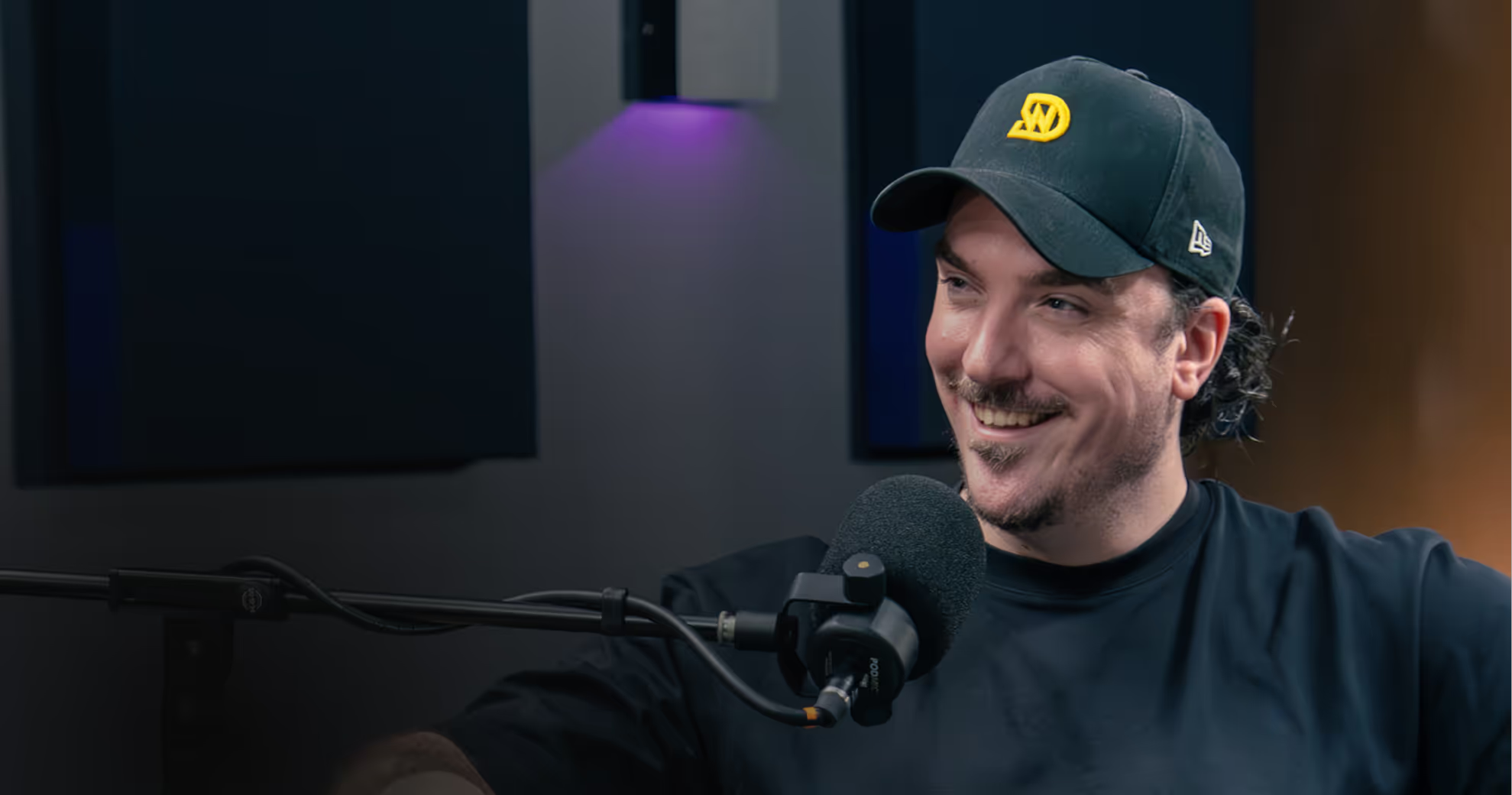
Work With Me
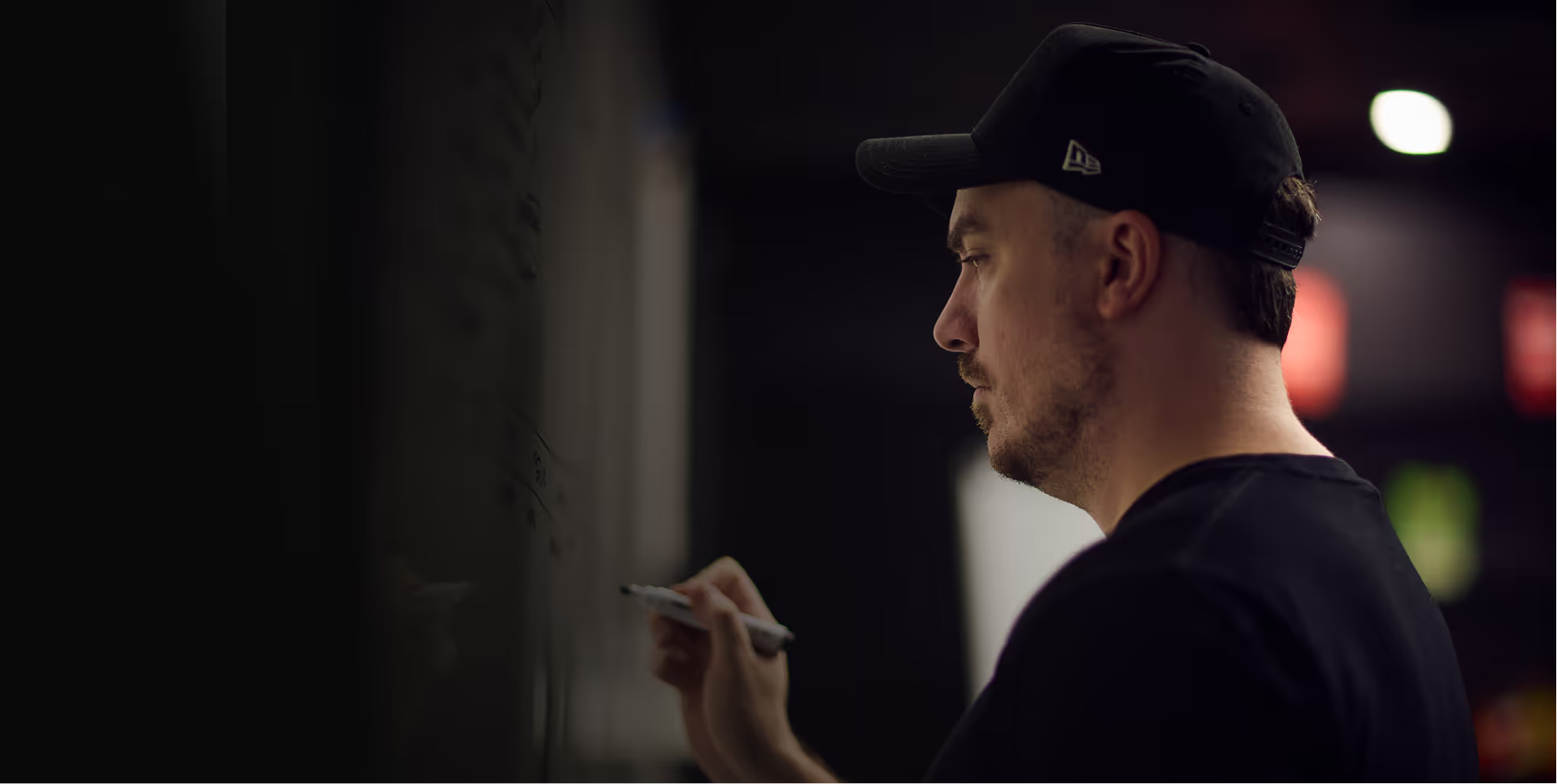
Enquire With Dain’s Team
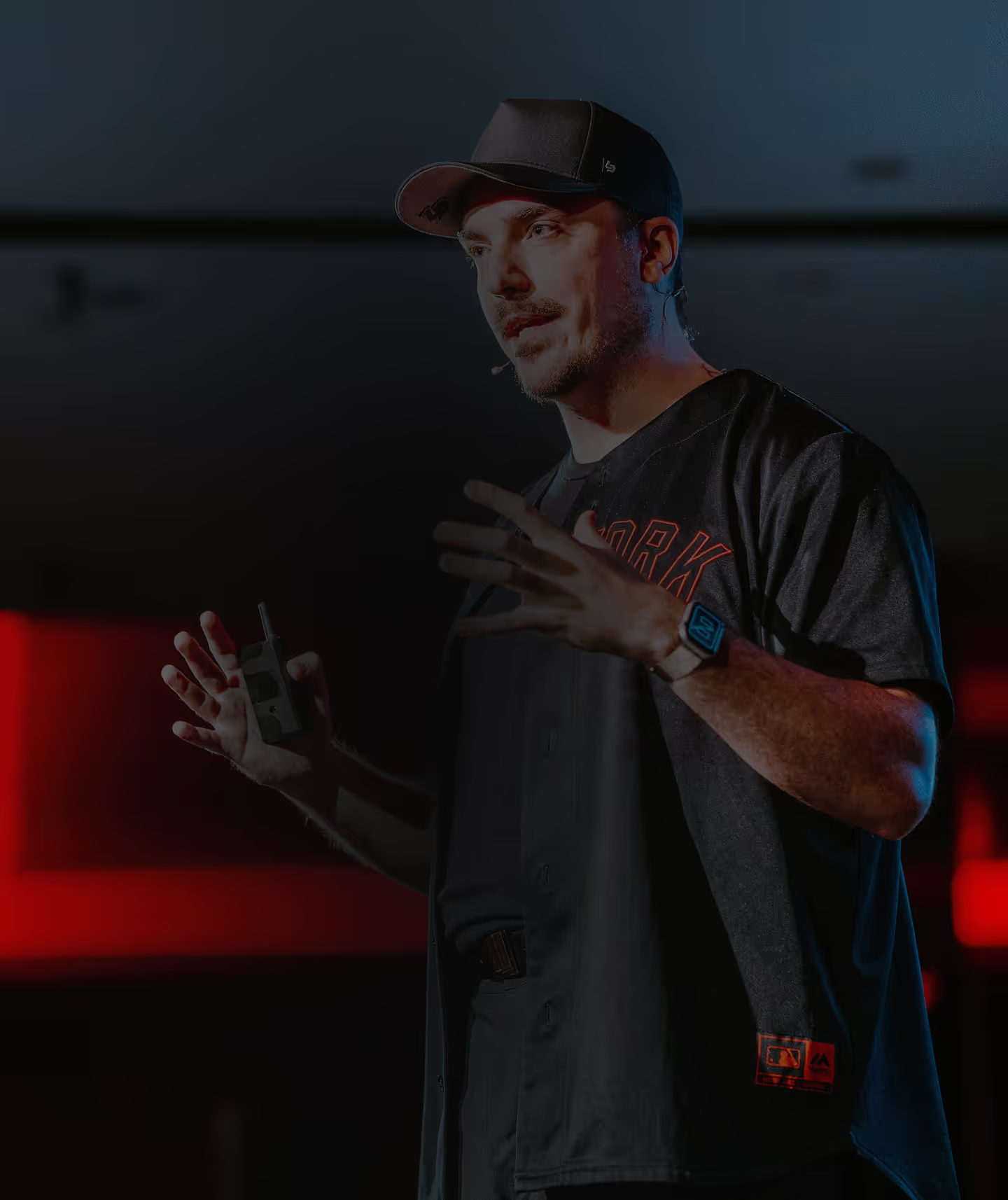
Enquire For Speaking

Let's Get You Branded
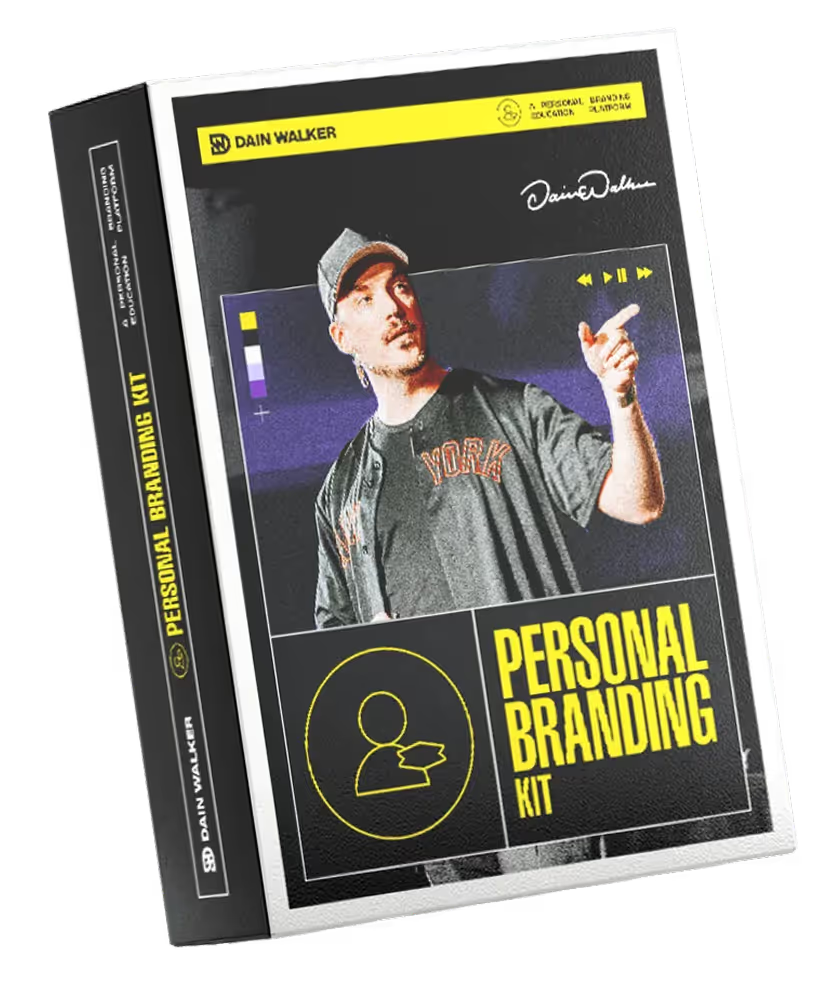
Apply to be a guest
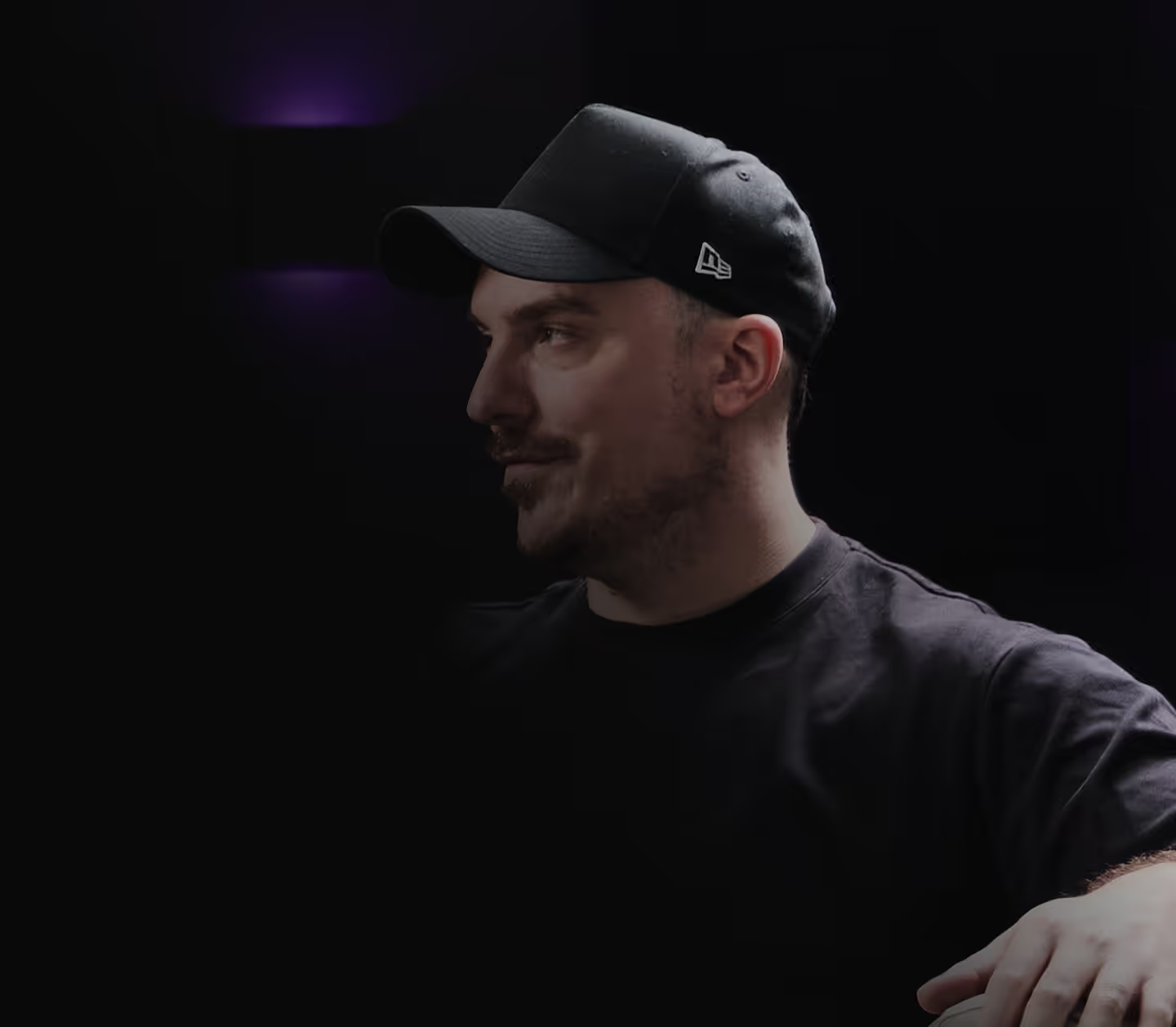
Dive into insights from industry leaders and experts.

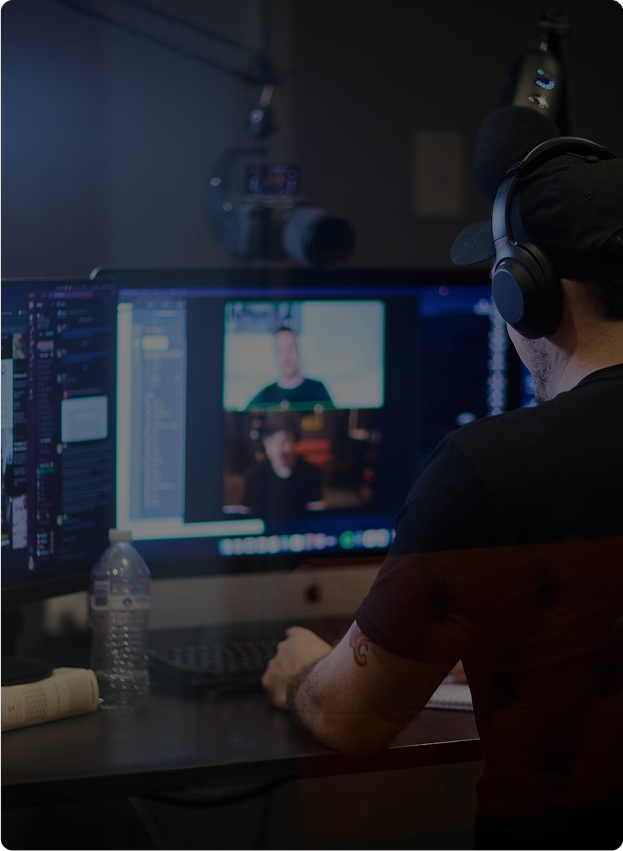

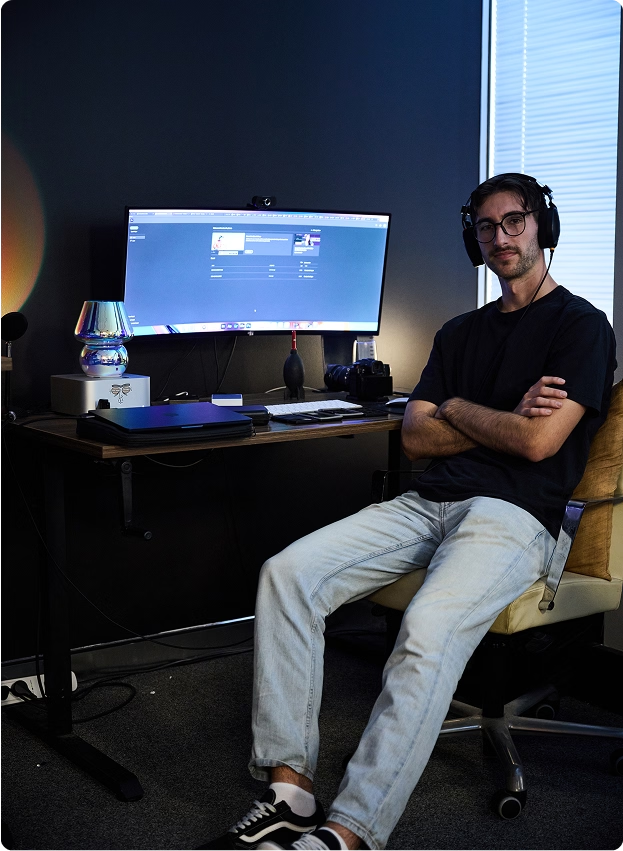
Stream now
Dive into expert advice and industry trends.
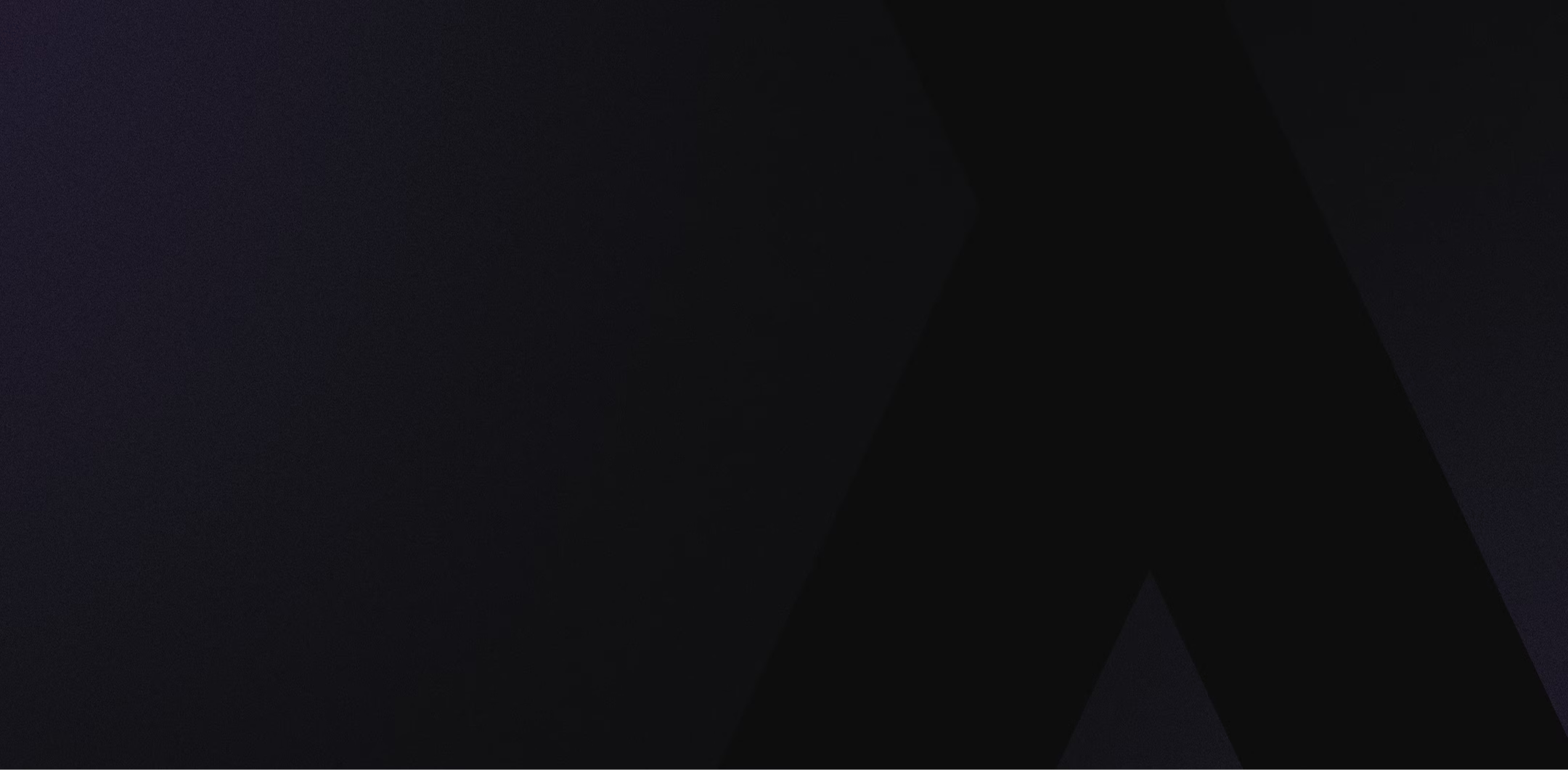


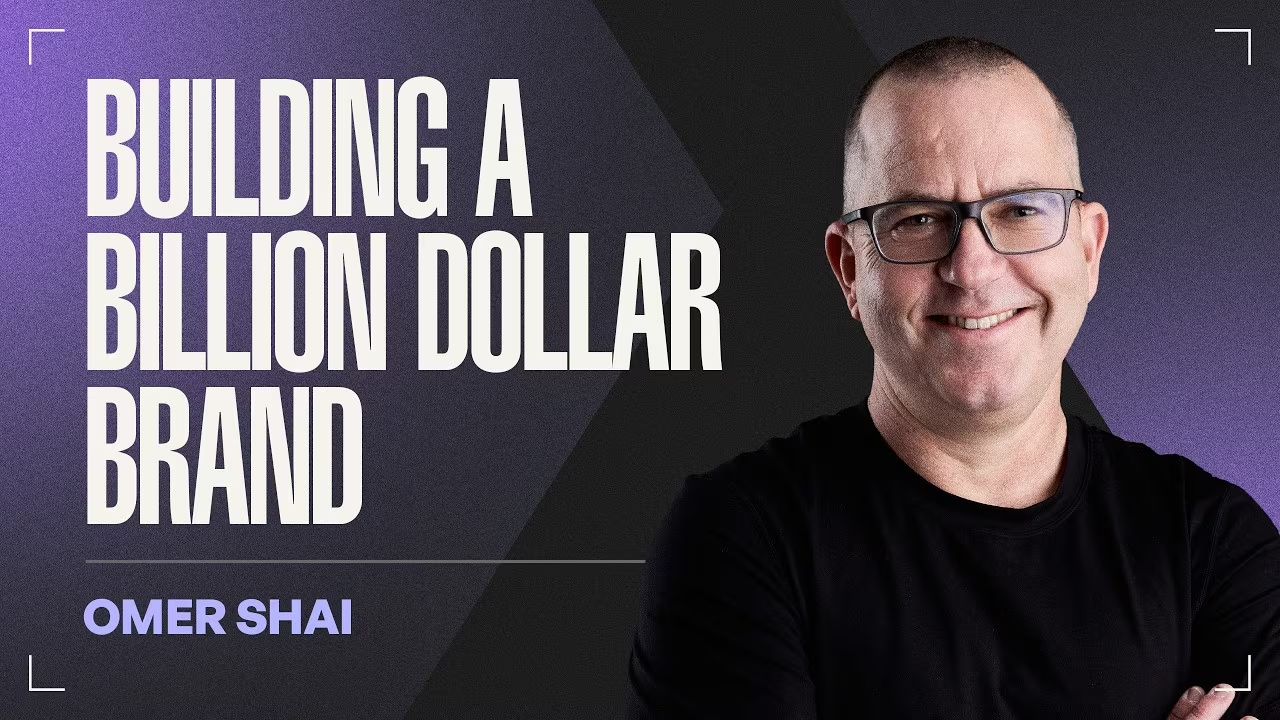
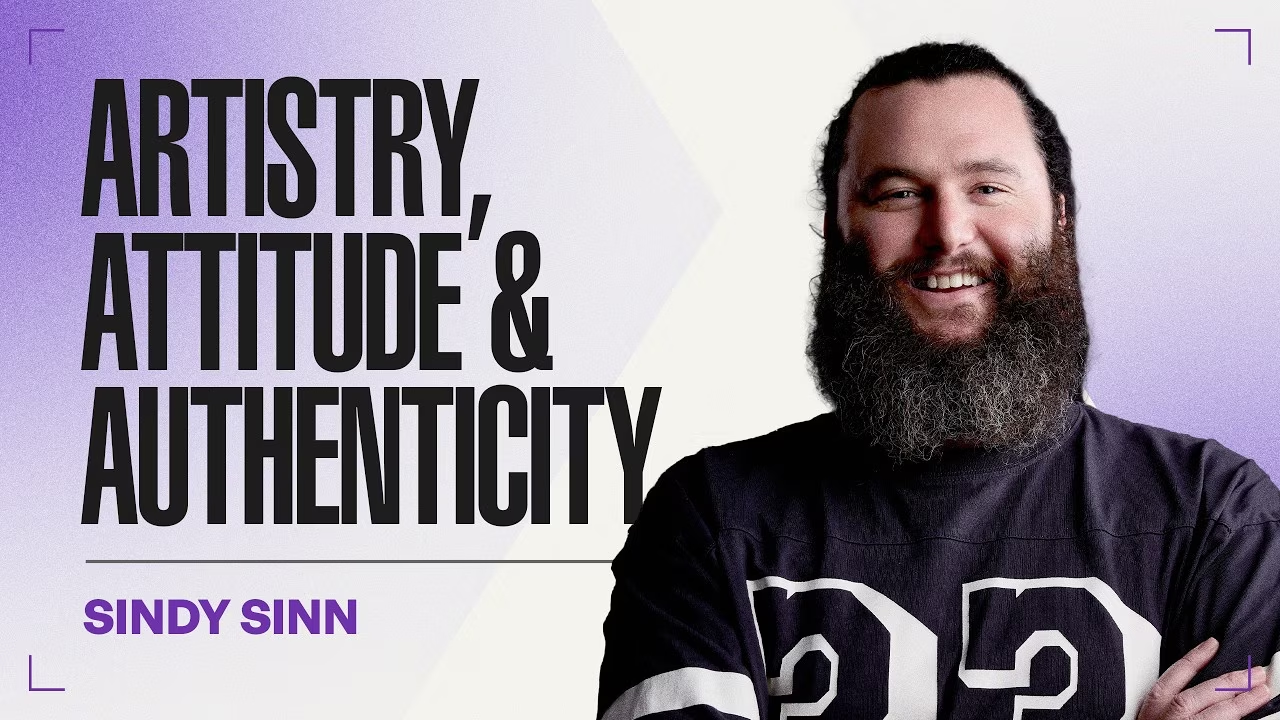
%20(1).avif)
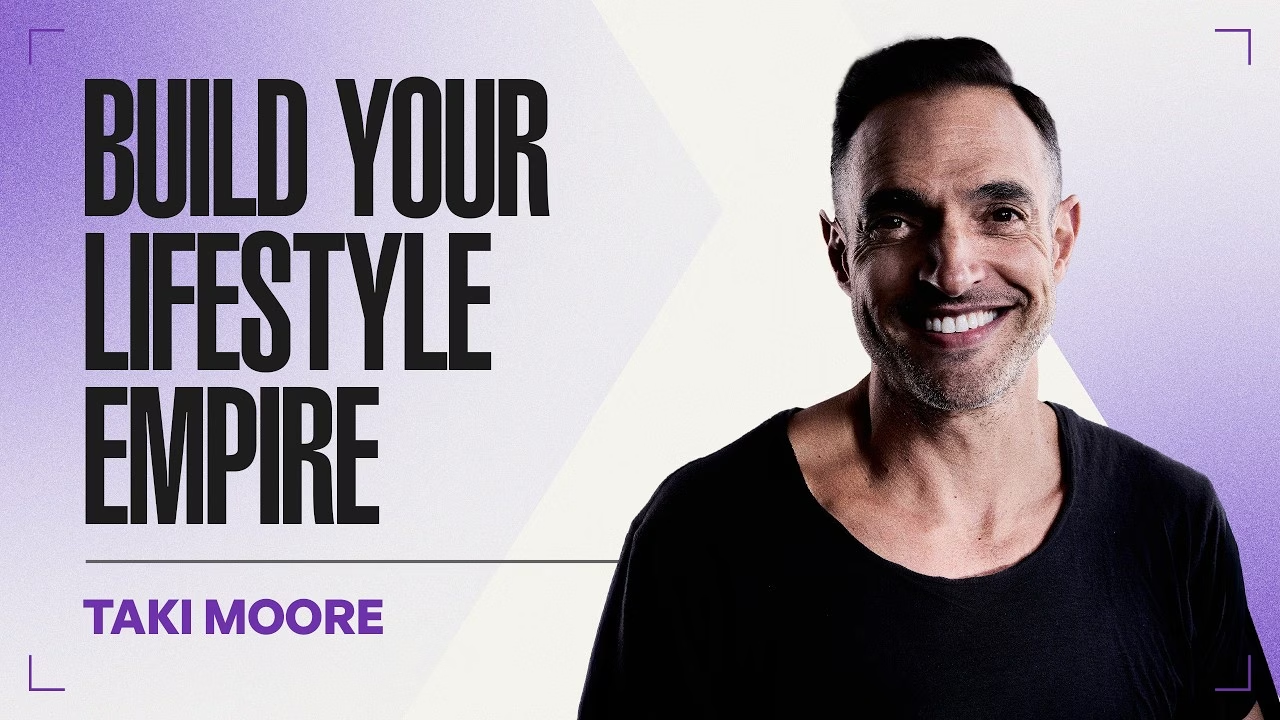
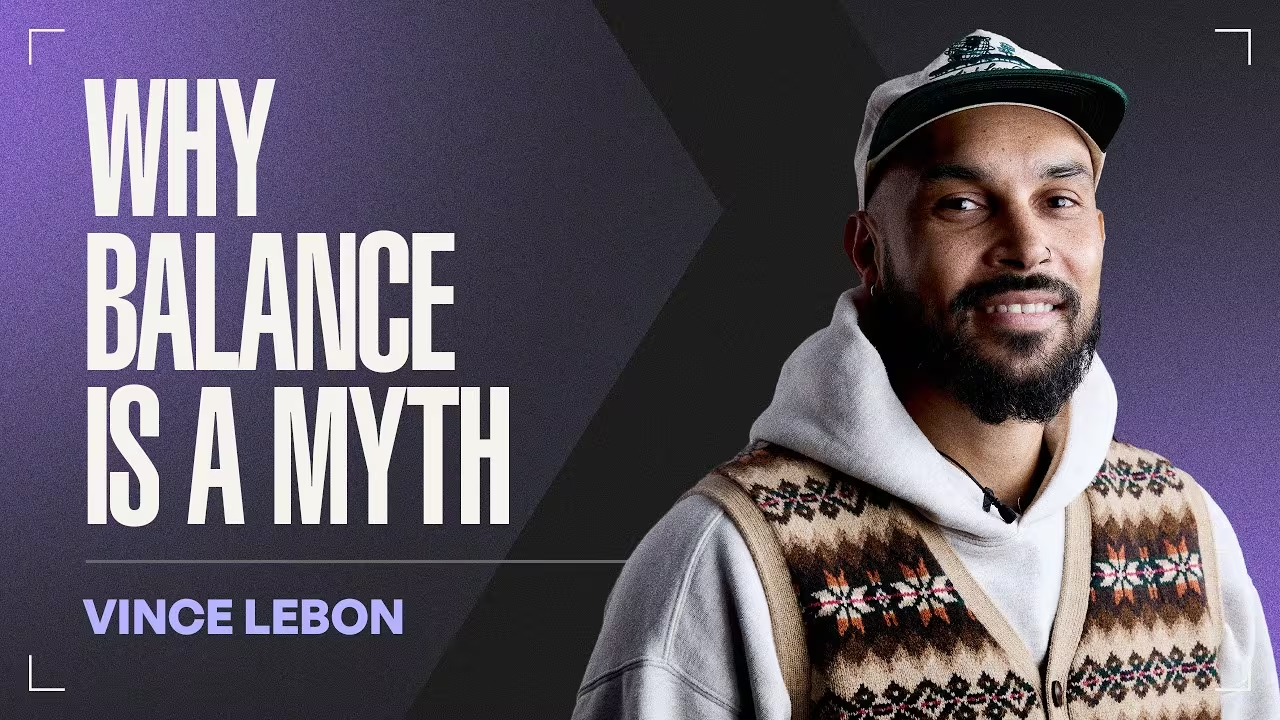



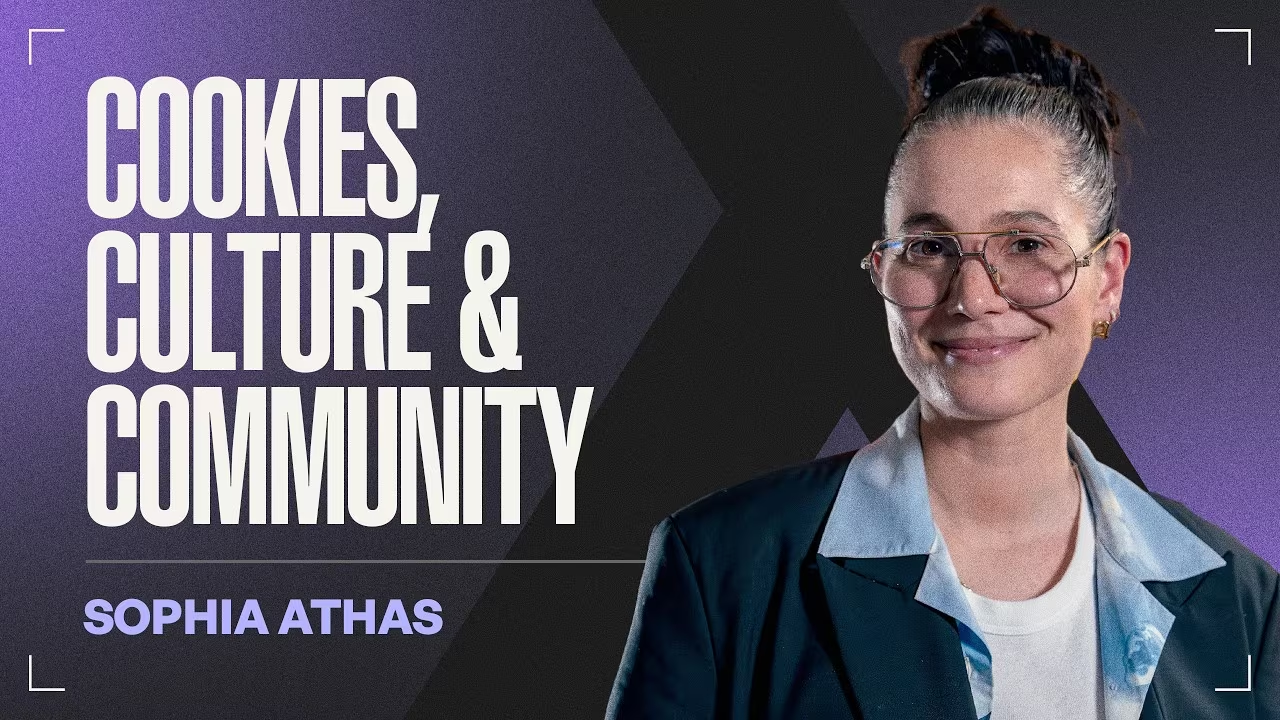

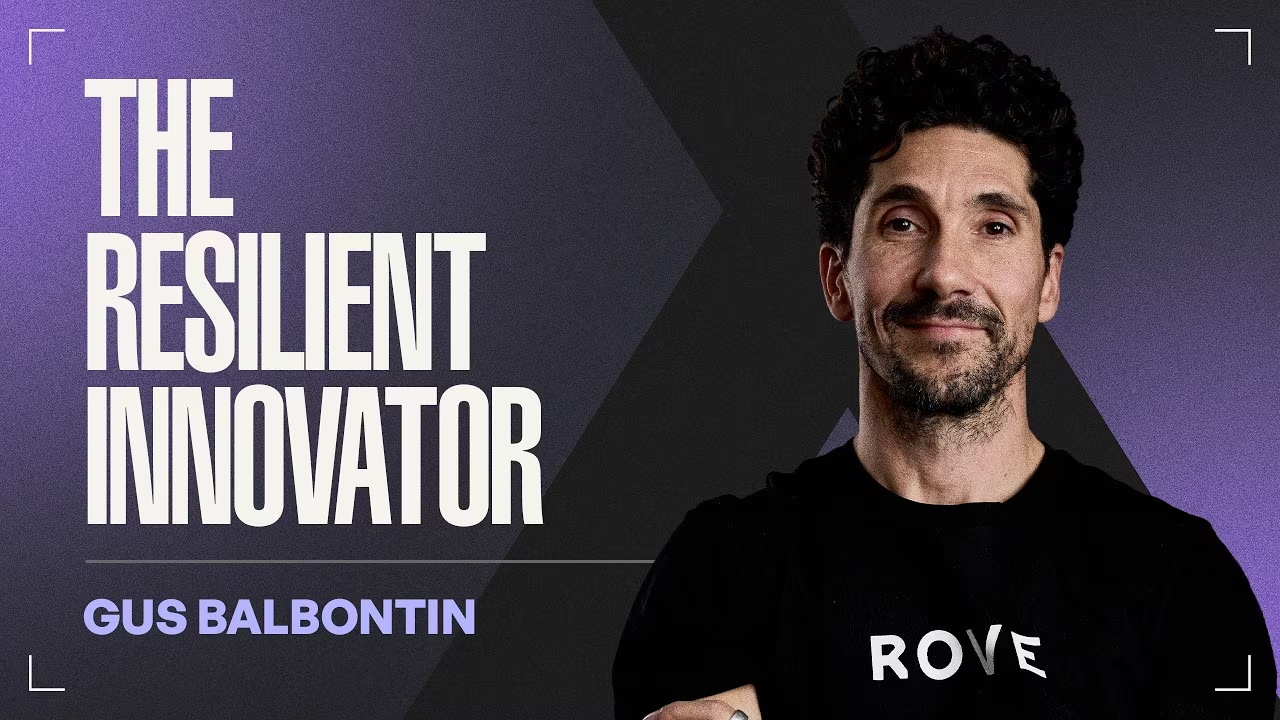



.avif)

